In the previous sequel of the stories on my travel along the French Riviera in the spring of 2022, I got to my visit to the Villa Ephrussi de Rothschild and the tour of the villa itself.
Now I’m moving to the story that deals with the visit to the gardens that are a part of the same estate.
Namely, parallel to the construction of the villa, Baroness Ephrussi de Rothschild ordered from at the time famous landscape architect to set up a garden as well and that work lasted from 1905 till 1912, which means that the villa and the garden were completed at the same time. By the way, the garden consists of several sections and that’s why it is often referred to as gardens.
Because of the shape of the property which is rather long and relatively narrow, the entire garden was designed as a large ship that was looked at from the loggia of the villa as if it were the bridge of the ship. But the maritime associations do not stop there. Namely, the whole idea of a ship was inspired by a baroness’s journey on the ocean liner Île de France and thus the original name of the villa was precisely that one – Villa Île de France. And even that is not all. In order for the impression to be as strong as possible, some thirty gardeners who worked the gardens were dressed like sailors.
Here is again a photo from the previous sequel in order to illustrate what I’m talking about here. Of course, nowadays there are no gardeners in sailor clothes.
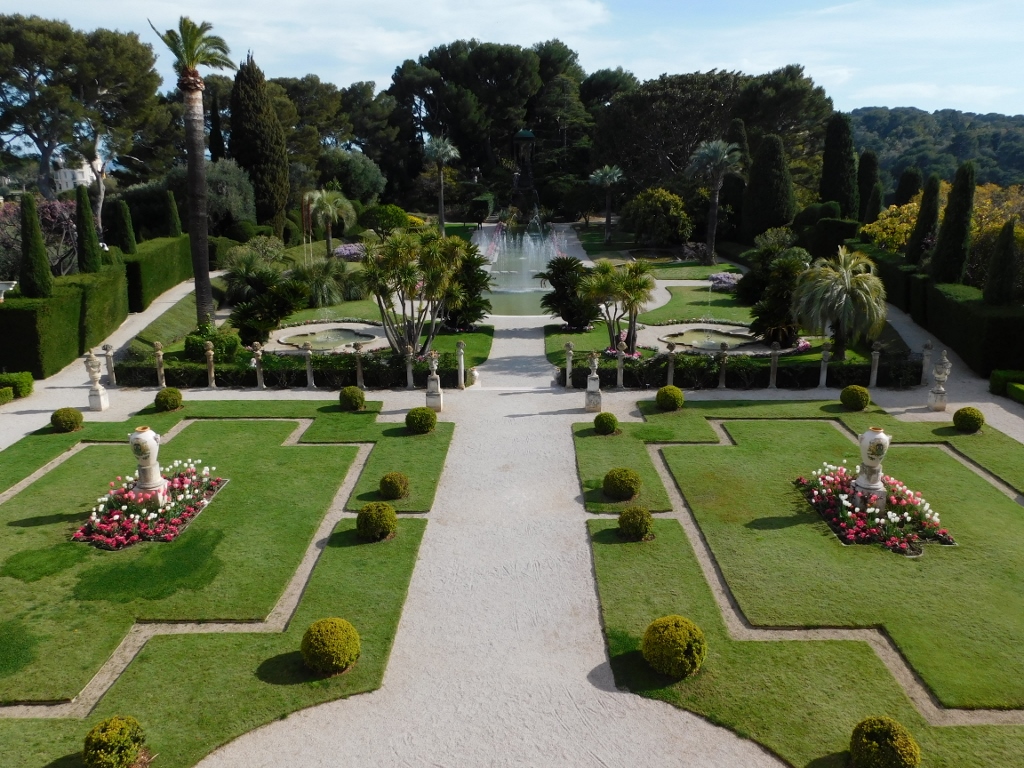 View at the Villa Ephrussi de Rothschild Gardens
View at the Villa Ephrussi de Rothschild Gardens
The garden is divided into nine thematic sections and, therefore, for this reason it is often spoken about in plural. The section that can be seen in the photo above is thus the “French Garden” which is also the biggest one on the property. Because of the mild climate that is present along the whole French Riviera, the gardens are worth the visit throughout the entire year, although some sections, such as the rose garden, are certainly at their most beautiful when the roses actually bloom.
I will now not go into details linked to what can be seen in different sections, since even a simple stroll around is nice by itself, but rather there is only a number of different photos that follow.
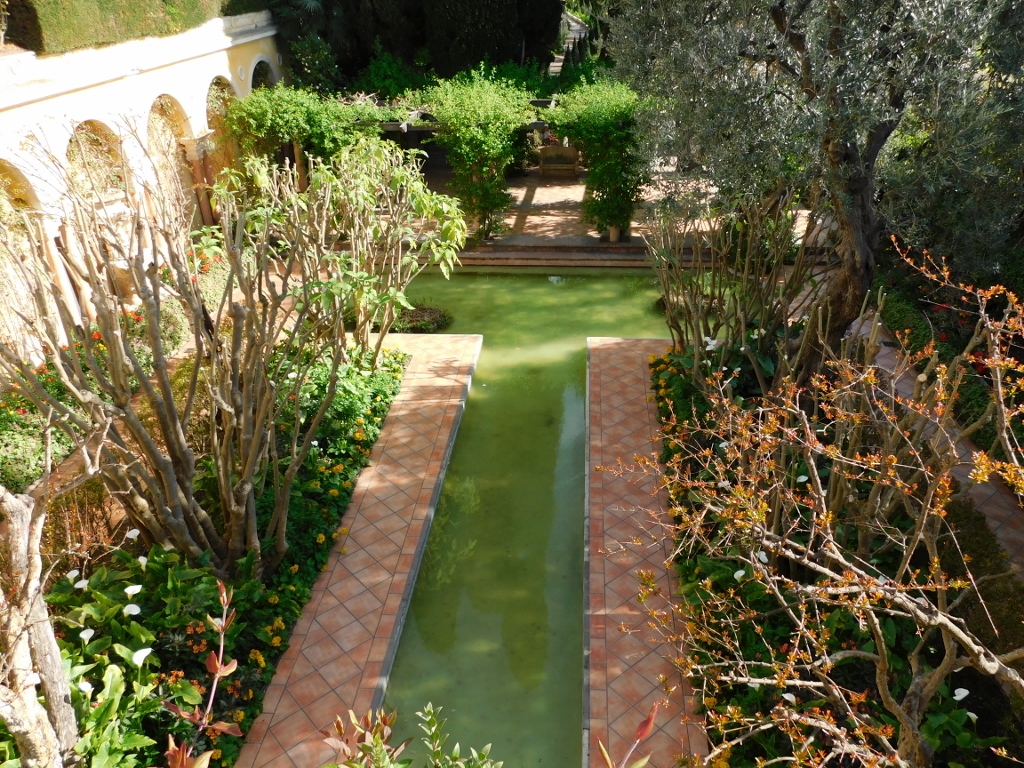 The Villa Ephrussi de Rothschild Gardens, a detail
The Villa Ephrussi de Rothschild Gardens, a detail
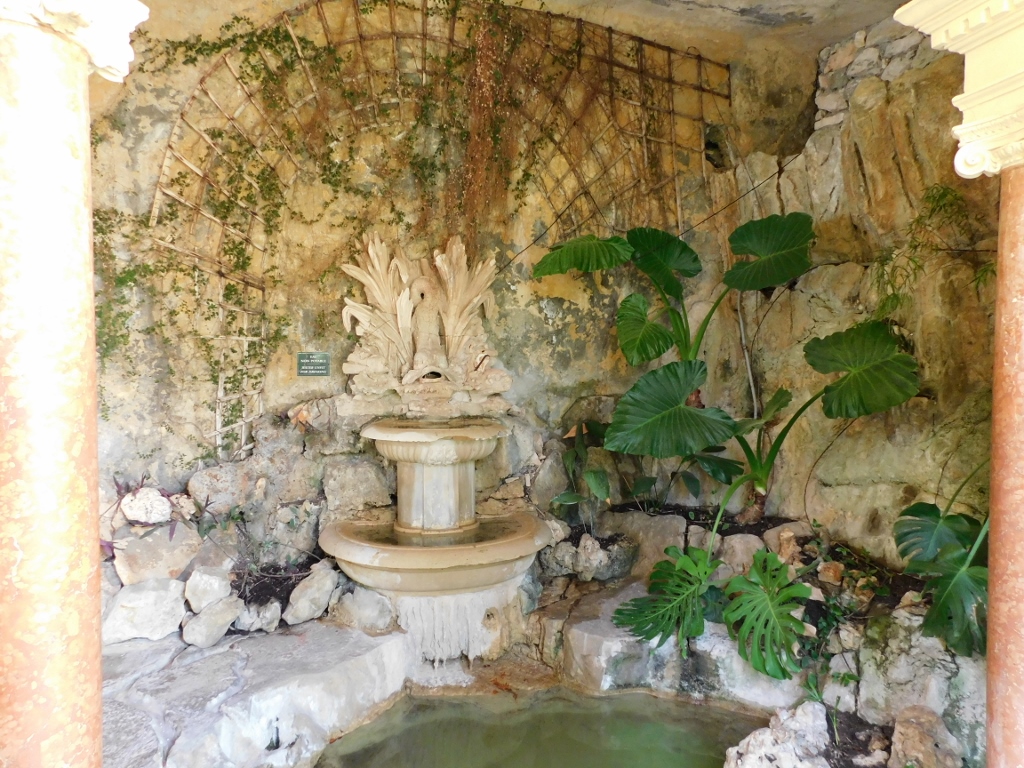 The Villa Ephrussi de Rothschild Gardens, a detail
The Villa Ephrussi de Rothschild Gardens, a detail
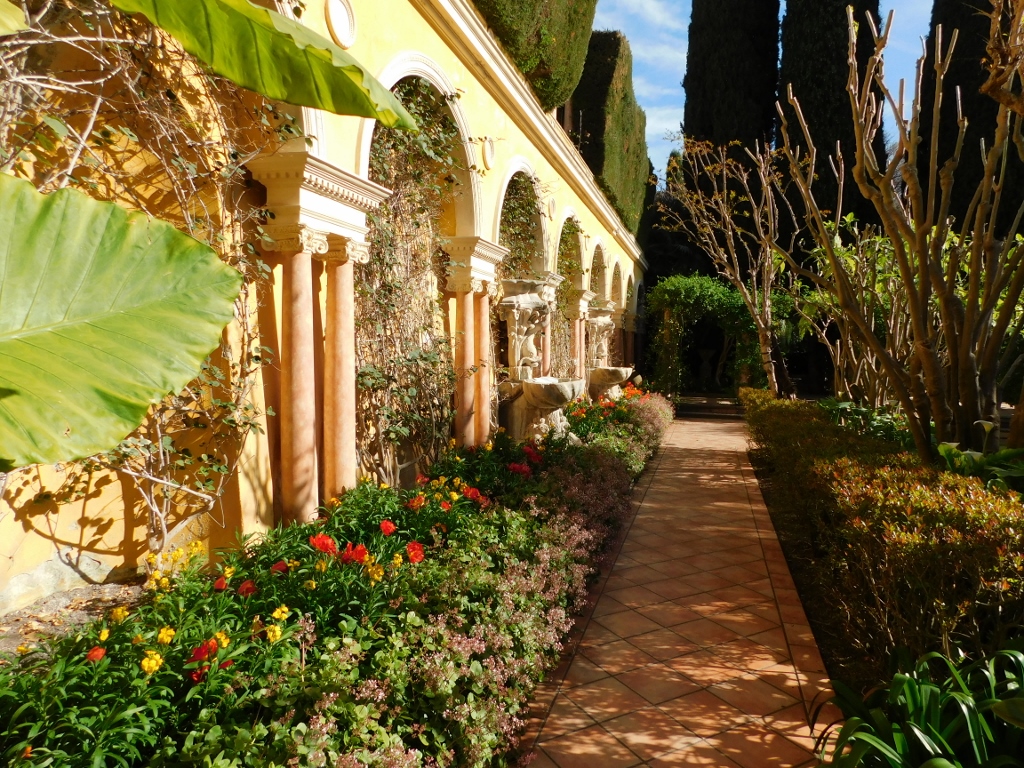 The Villa Ephrussi de Rothschild Gardens, a detail
The Villa Ephrussi de Rothschild Gardens, a detail
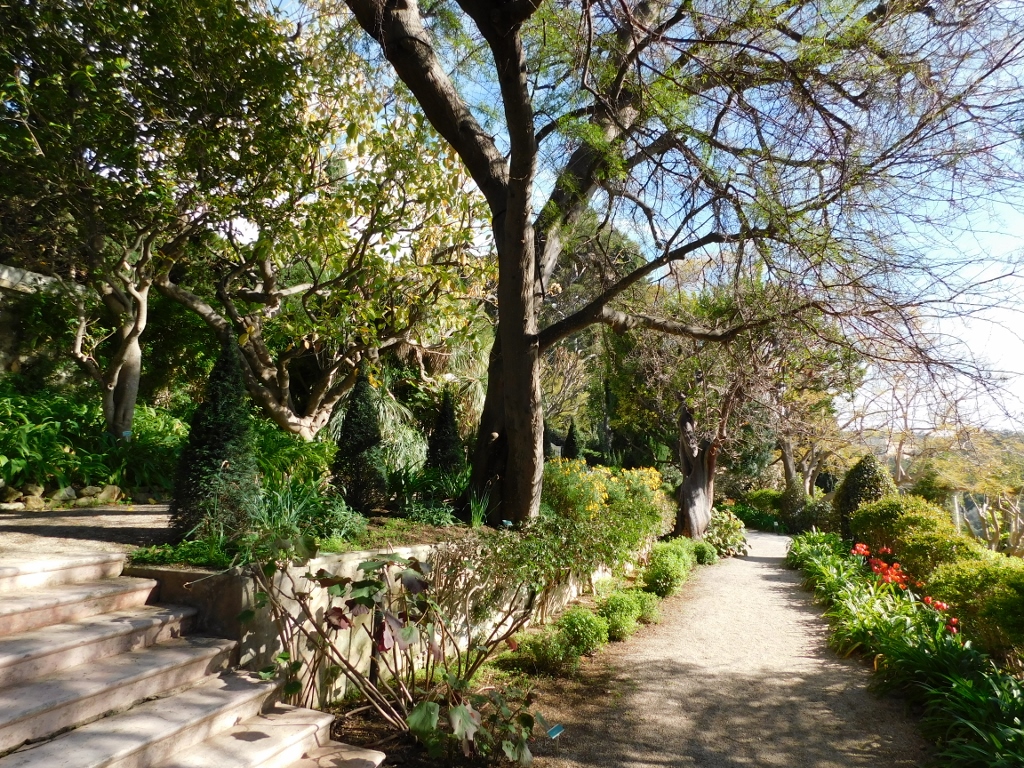 The Villa Ephrussi de Rothschild Gardens, a detail
The Villa Ephrussi de Rothschild Gardens, a detail
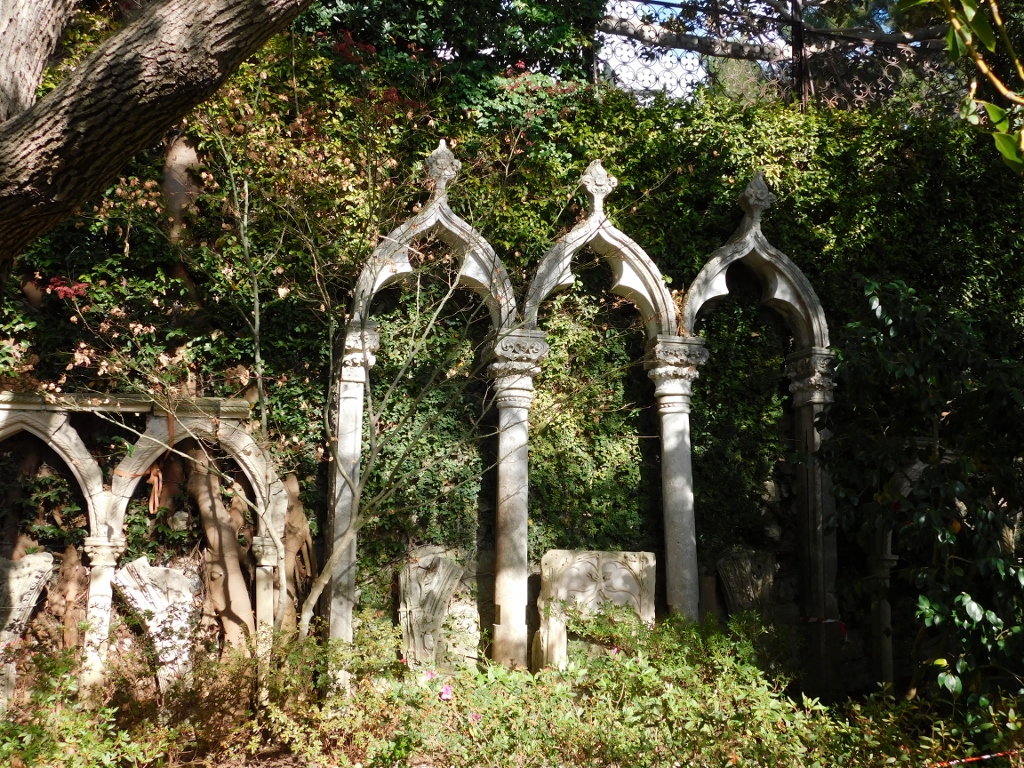 The Villa Ephrussi de Rothschild Gardens, a detail
The Villa Ephrussi de Rothschild Gardens, a detail
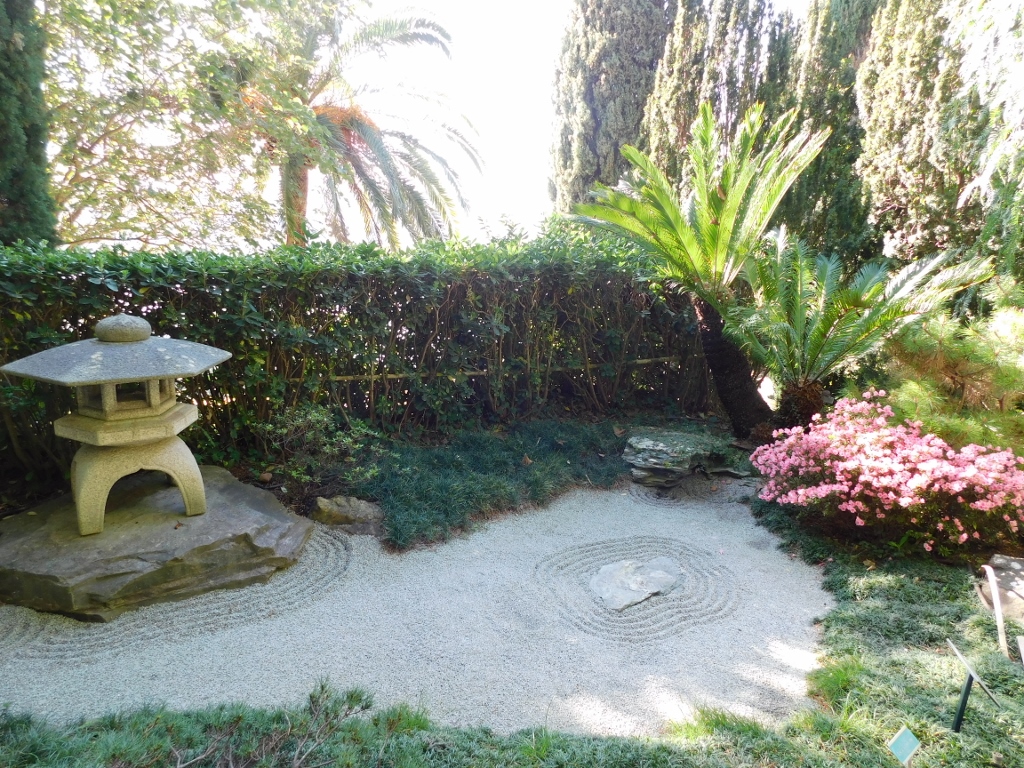 The Villa Ephrussi de Rothschild Gardens, a detail
The Villa Ephrussi de Rothschild Gardens, a detail
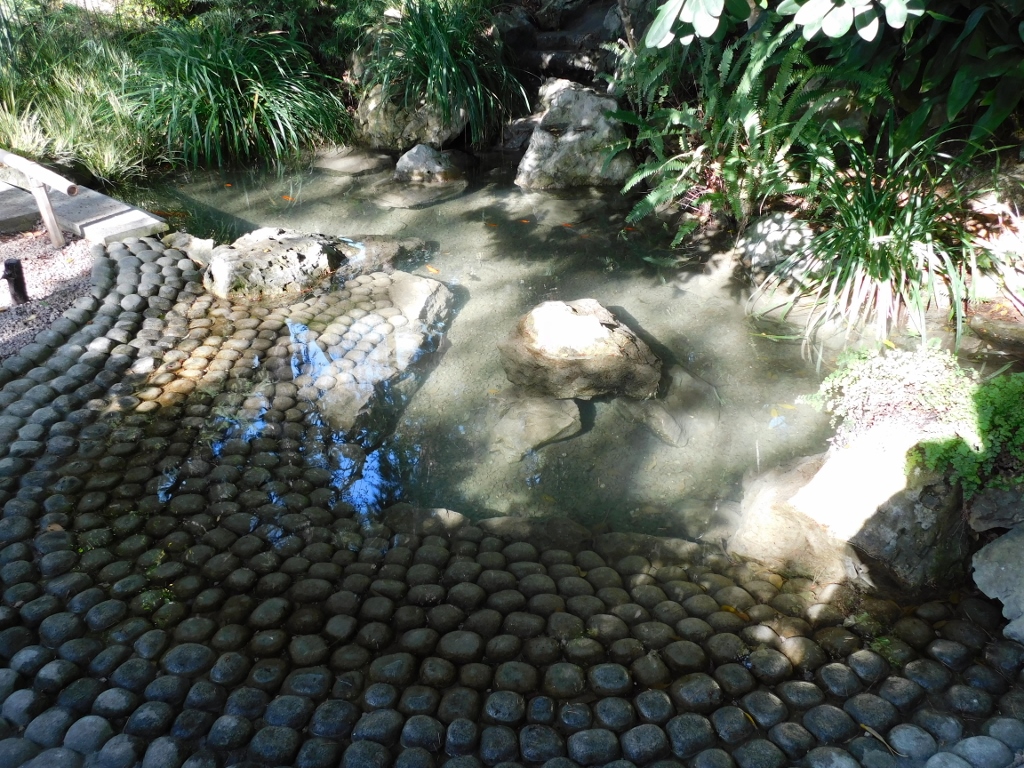 The Villa Ephrussi de Rothschild Gardens, a detail
The Villa Ephrussi de Rothschild Gardens, a detail
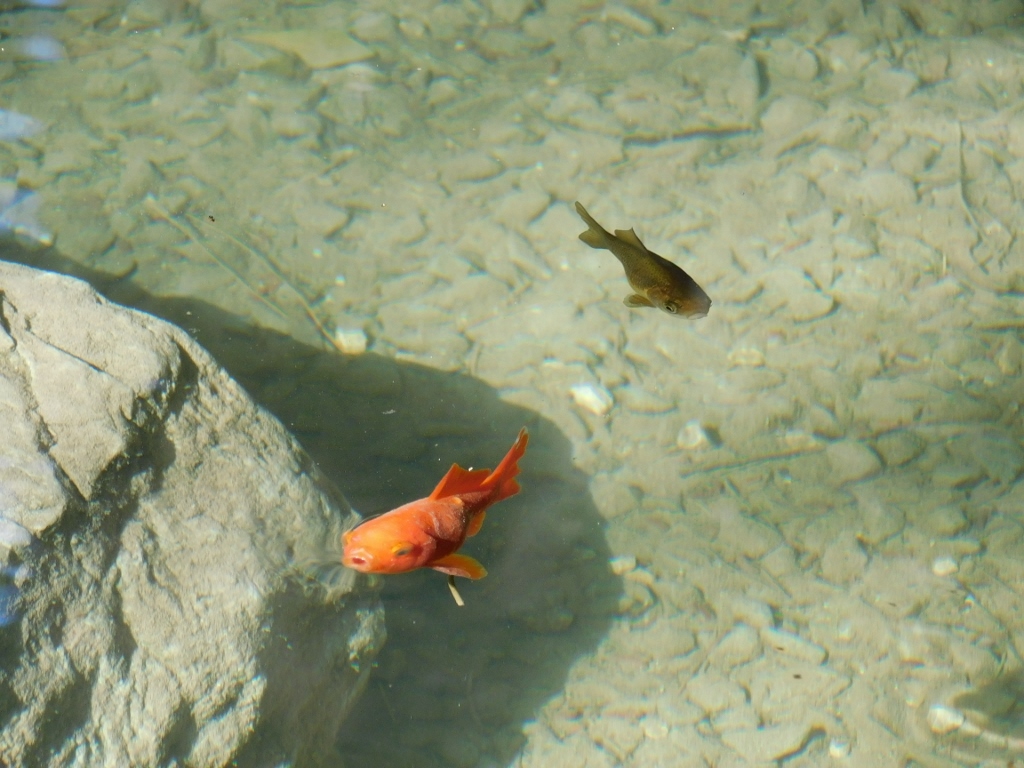 The Villa Ephrussi de Rothschild Gardens, a detail
The Villa Ephrussi de Rothschild Gardens, a detail
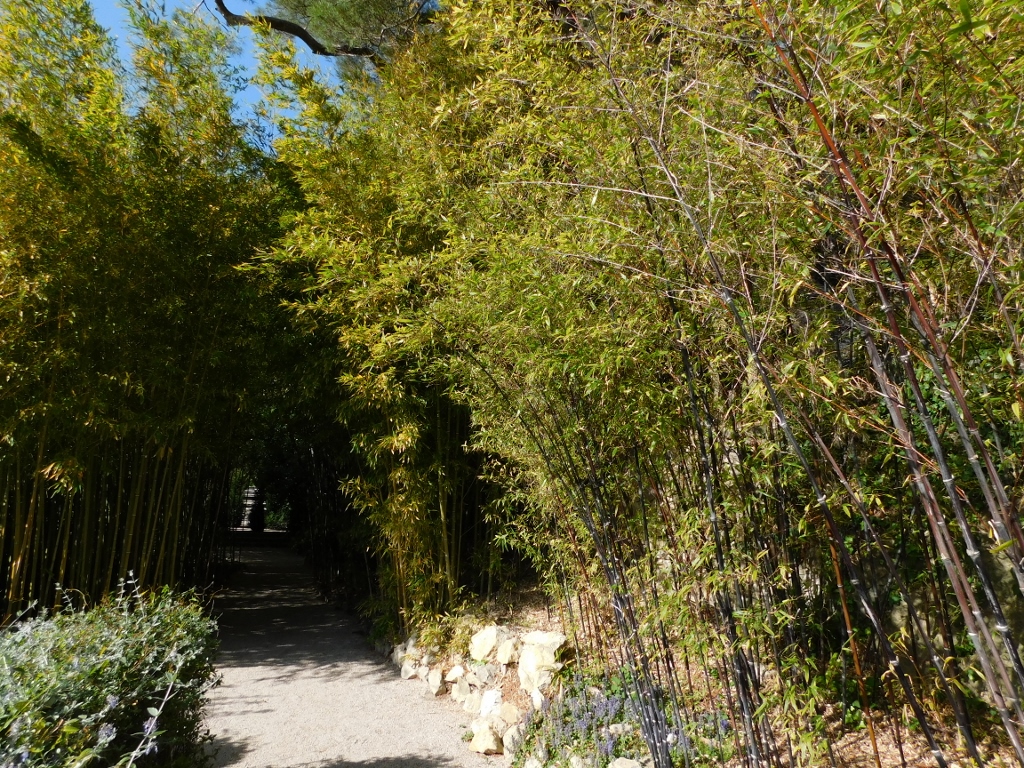 The Villa Ephrussi de Rothschild Gardens, a detail
The Villa Ephrussi de Rothschild Gardens, a detail
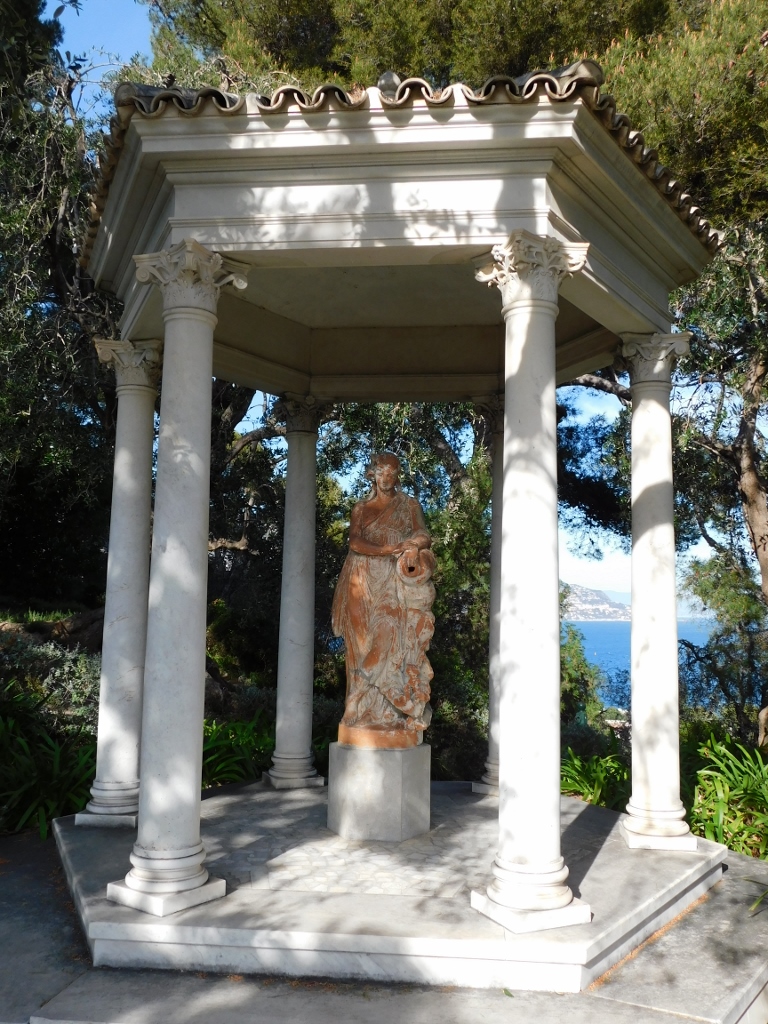 The Villa Ephrussi de Rothschild Gardens, a detail
The Villa Ephrussi de Rothschild Gardens, a detail
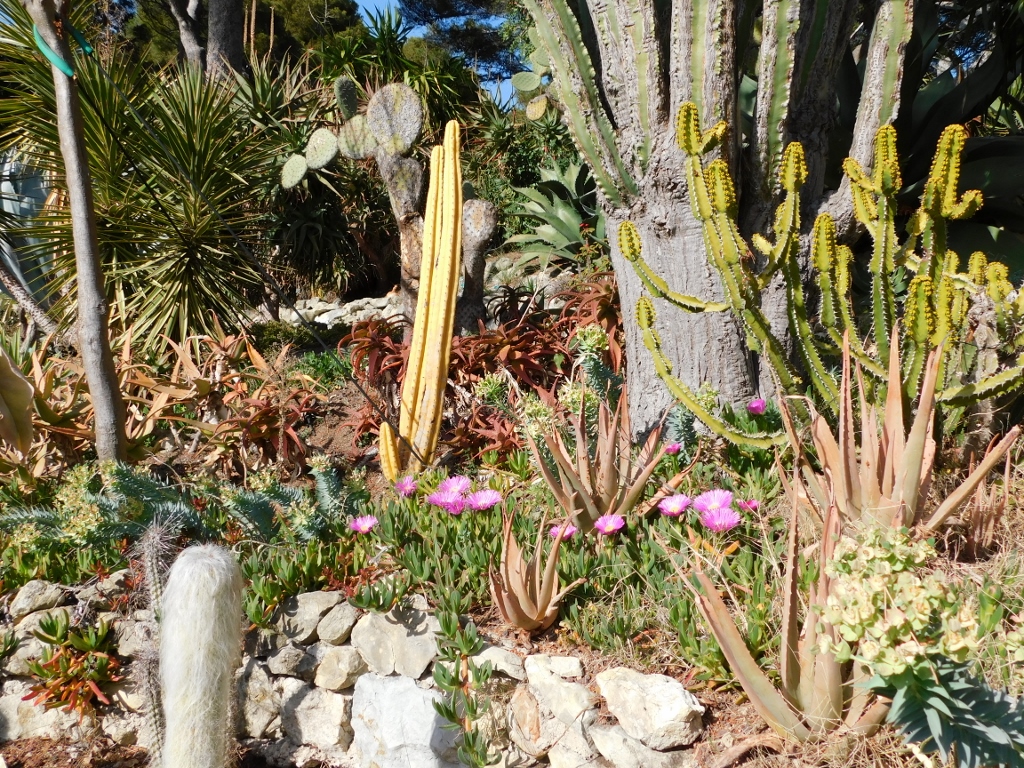 The Villa Ephrussi de Rothschild Gardens, a detail
The Villa Ephrussi de Rothschild Gardens, a detail
Not only can the visitor enjoy the beauty of the gardens during the stroll, but also very often, from the perimeter areas of the gardens, there is a fine view at the surroundings and the Mediterranean Sea.
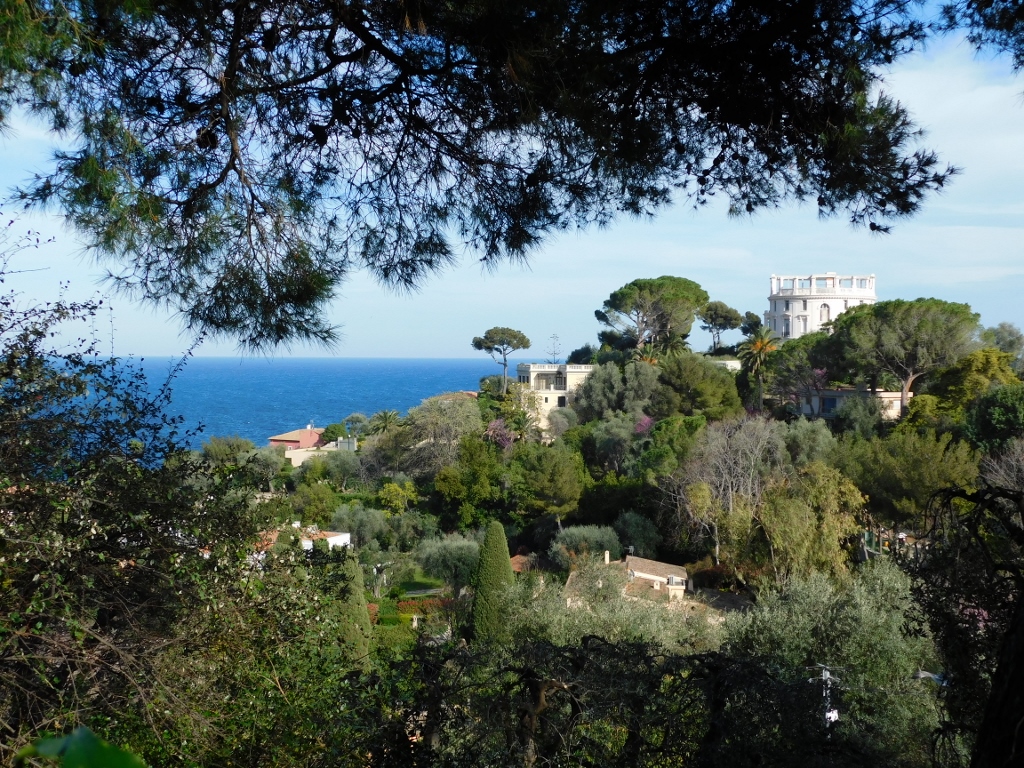 Fine view from the Villa Ephrussi de Rothschild Gardens
Fine view from the Villa Ephrussi de Rothschild Gardens
I completed my visit by returning to the French Garden from where I had a lovely view both at the flat area of the garden with fountains and at the villa itself.
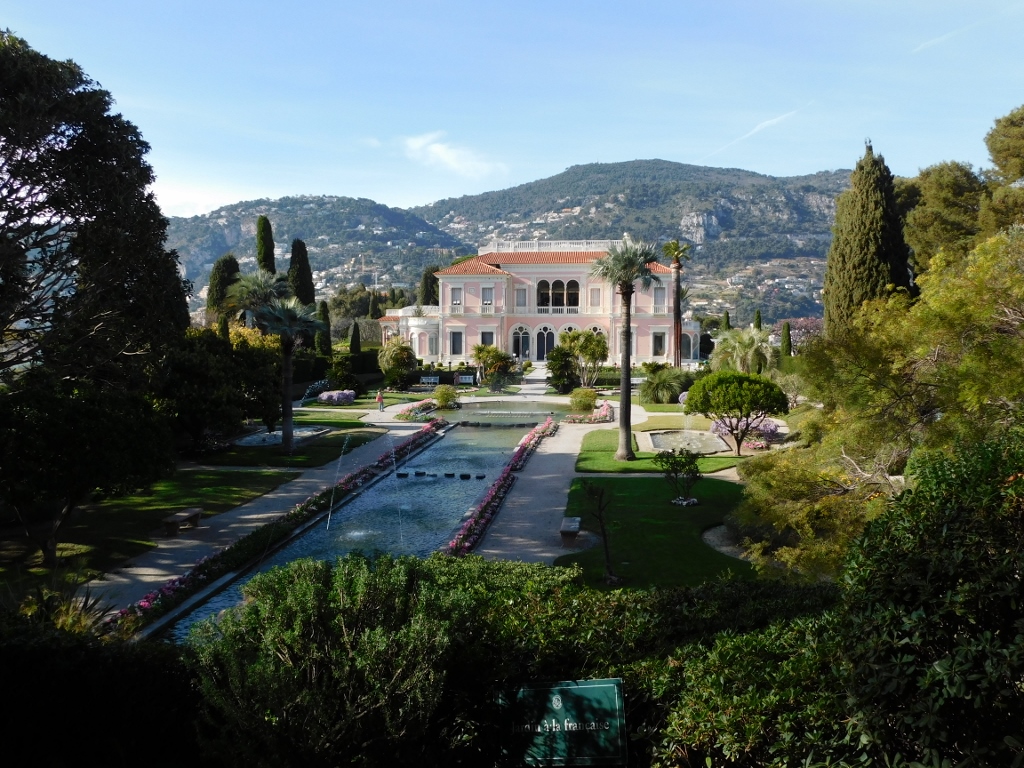 The Villa Ephrussi de Rothschild property
The Villa Ephrussi de Rothschild property
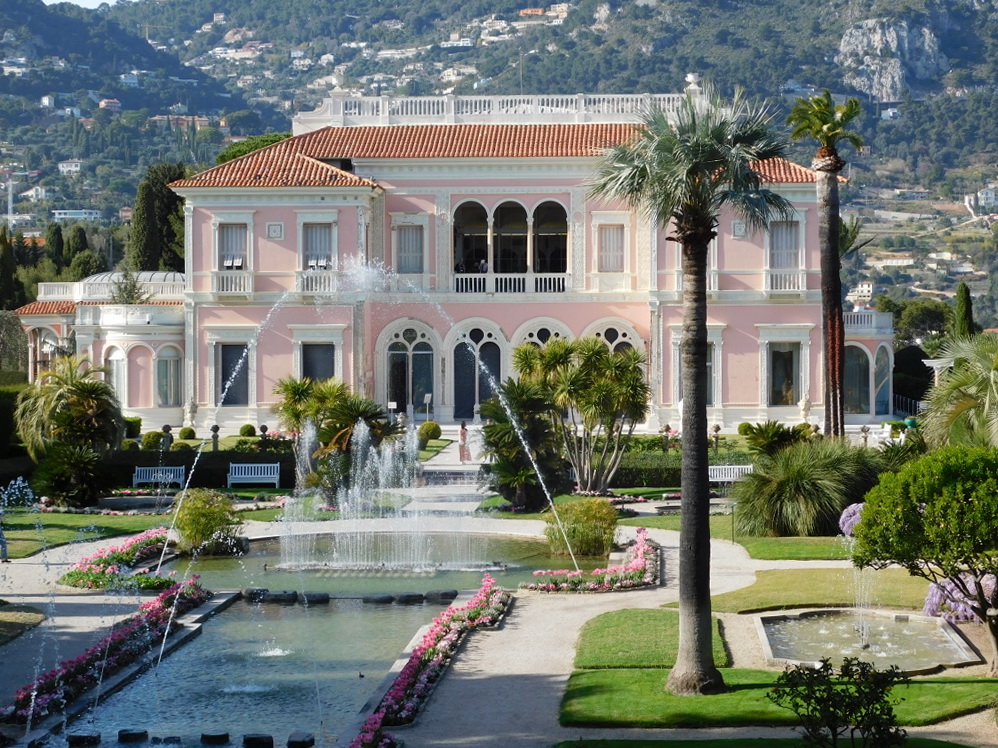 Villa Ephrussi de Rothschild
Villa Ephrussi de Rothschild
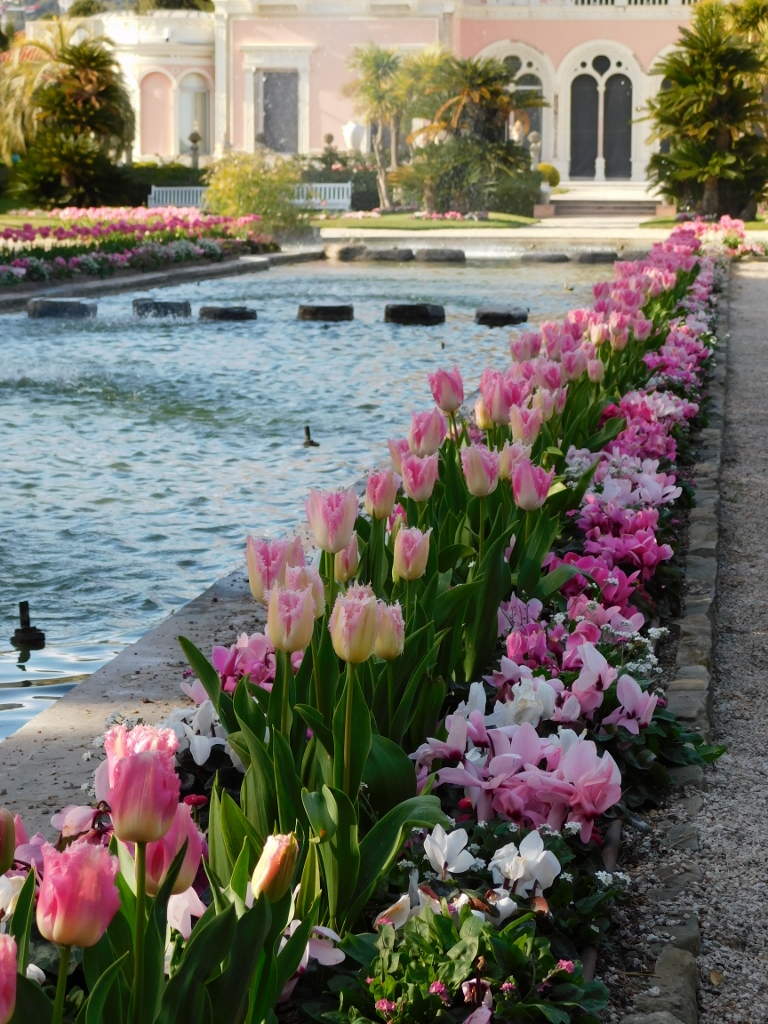 The Villa Ephrussi de Rothschild property, a detail
The Villa Ephrussi de Rothschild property, a detail
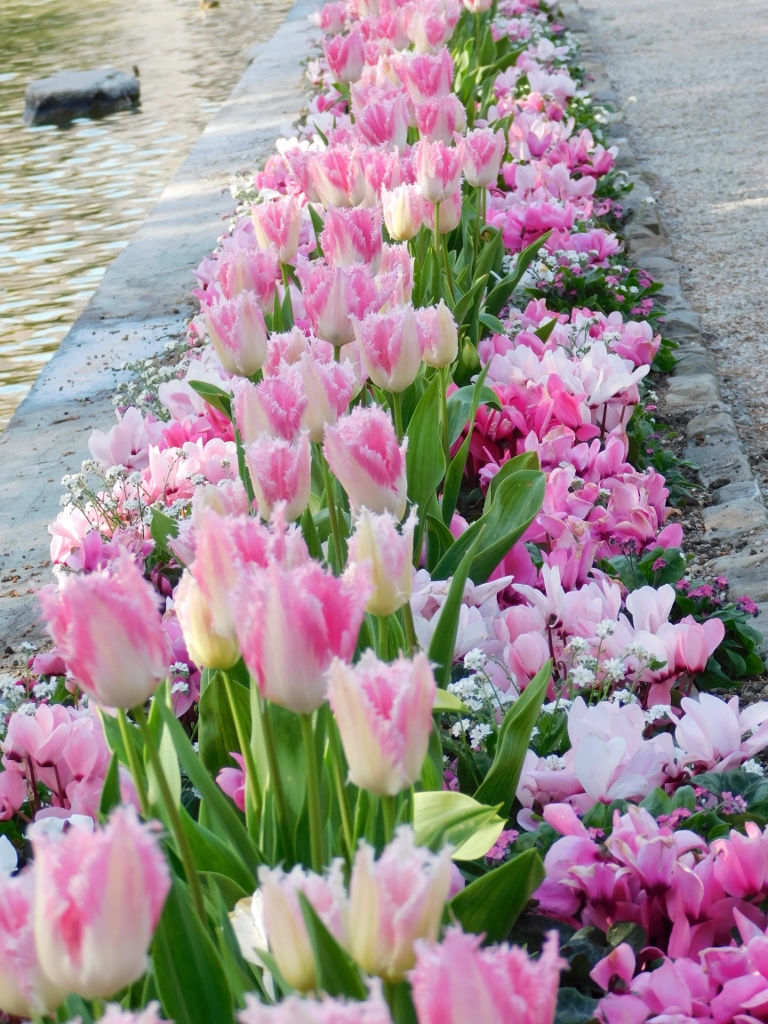 The Villa Ephrussi de Rothschild property, a detail
The Villa Ephrussi de Rothschild property, a detail
In addition to the garden elements, the French Garden also offers small shows with the fountain and classical music. Officially, this goes every 20 minutes. I don’t recall staying here that long and yet I have a video consisting of three segments. It may be somewhat monotonous, but the sights are certainly pretty.
When the music act with the fountain ended, I looked around a little bit more. There were some lovely details linked to the flat part of the French garden, as well as those that could be seen on the little hillock, such as the Temple of Love, made after the paragon from Versailles and placed at the highest point of the property.
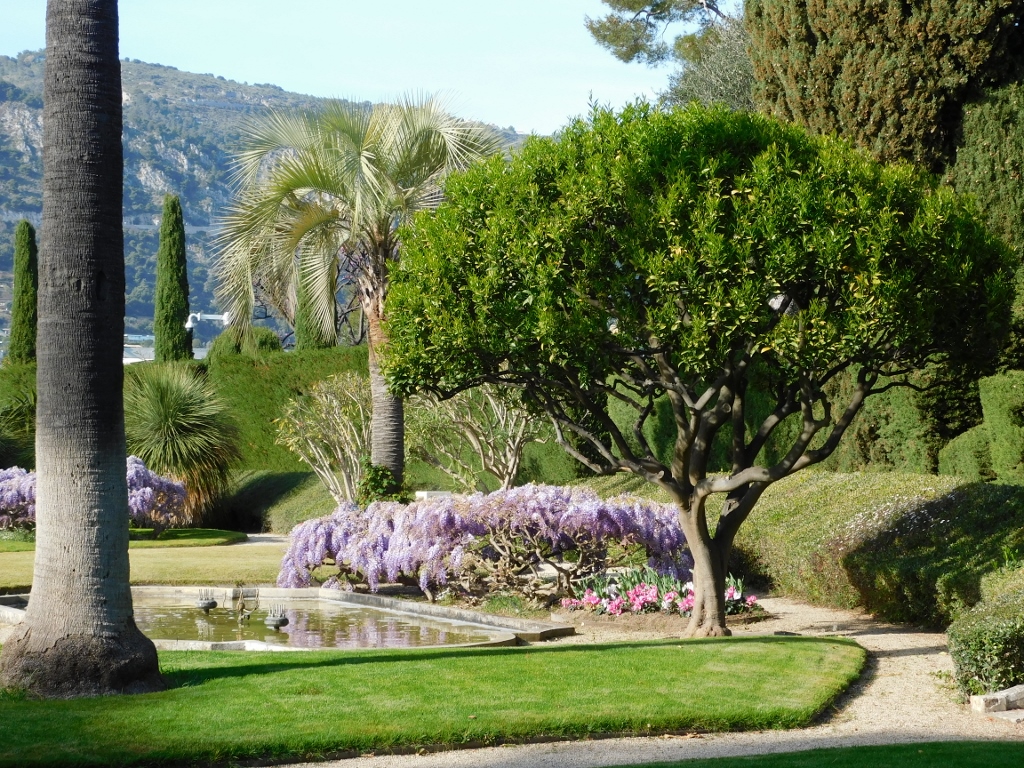 The Villa Ephrussi de Rothschild property, a detail
The Villa Ephrussi de Rothschild property, a detail
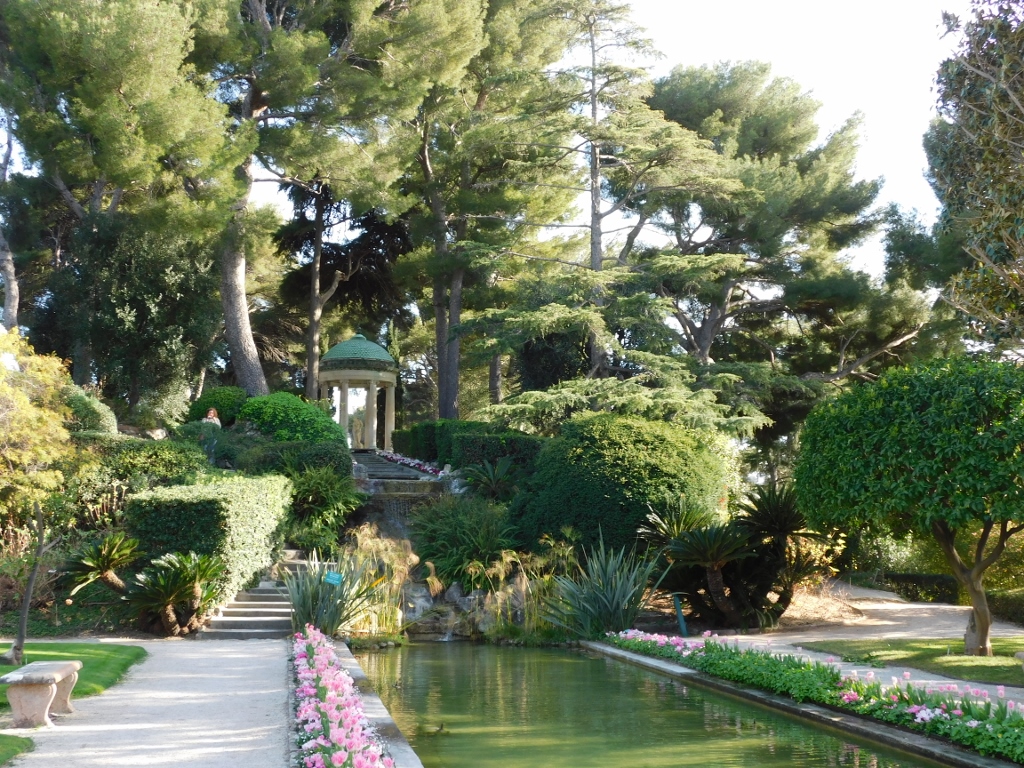 Temple of Love can be discerned between the pine trees
Temple of Love can be discerned between the pine trees
Here I finished with my visit to the Villa Ephrussi de Rothschild and so I started to return to the town of Villefranche-sur-Mer. For a while I followed the same route I took when first coming here, only to deviate at some point, but in the desired direction. Again I could see some nice sights that I had seen earlier, although the sunlight was very subdued now for it was already later afternoon and that created a special sensation of serenity.
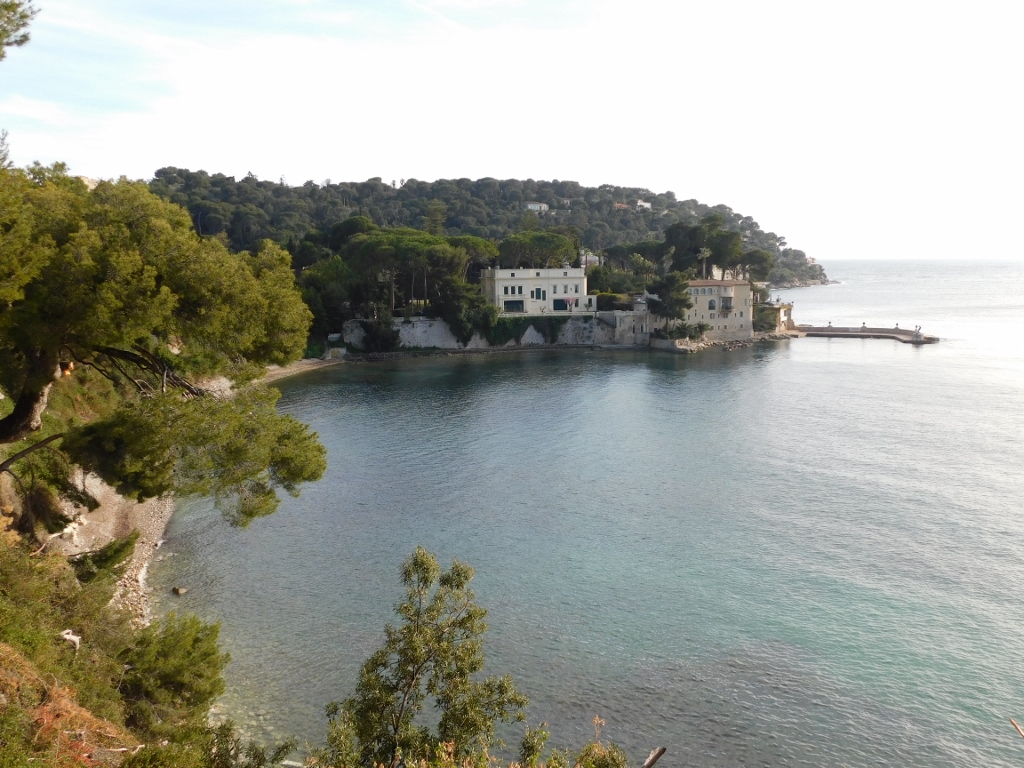 Saint-Jean-Cap-Ferrat, a detail
Saint-Jean-Cap-Ferrat, a detail
I also walked past some apartment buildings. It was clear that it was the beginning of April and the main season for staying in the French Riviera was still far away, so most of these apartments appeared empty.
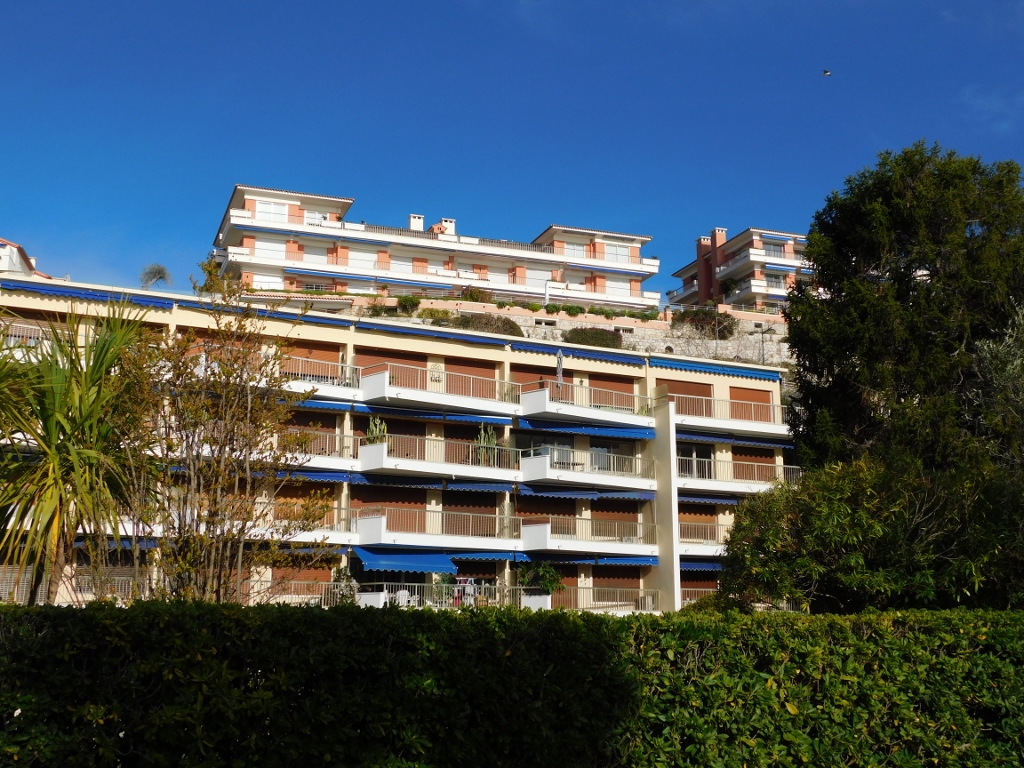 Saint-Jean-Cap-Ferrat, a detail
Saint-Jean-Cap-Ferrat, a detail
And then I reached the street that runs along the beach in Villefranche-sur-Mer bay and since there are several small cafés and restaurants, I sat in one where I enjoyed intensively not only the excellent coffee, but also the beautiful end of the day.
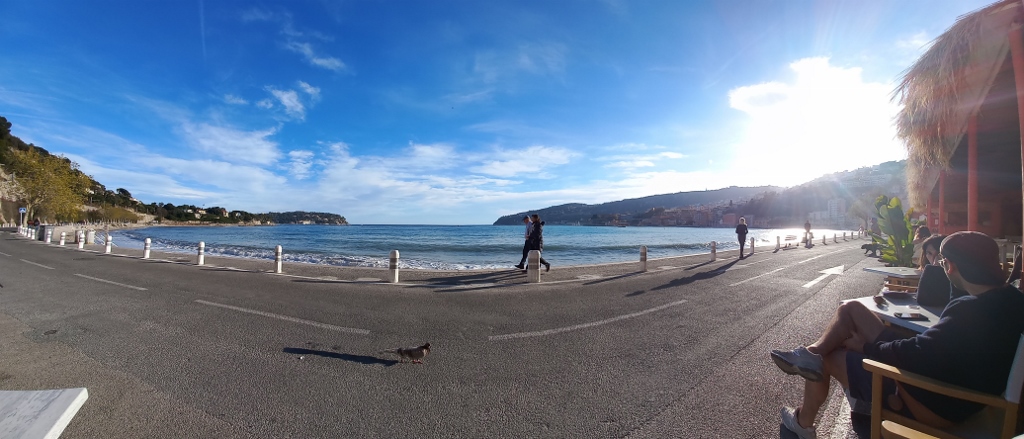 Villefranche-sur-Mer
Villefranche-sur-Mer
I spent the whole of next day in Nice. I walked most of the day with intention to see some places I had skipped earlier or did not have the time to see, but I also wanted to pass by some others that I had already seen. The point was that I walked a lot without any pressure or hurry.
First I walked to the Masséna Museum dealing with the history of Nice, although I had no intention of visiting it. Actually I wanted to see the building itself because its facades and the roof, as well as the park around it have been declared historical monuments.
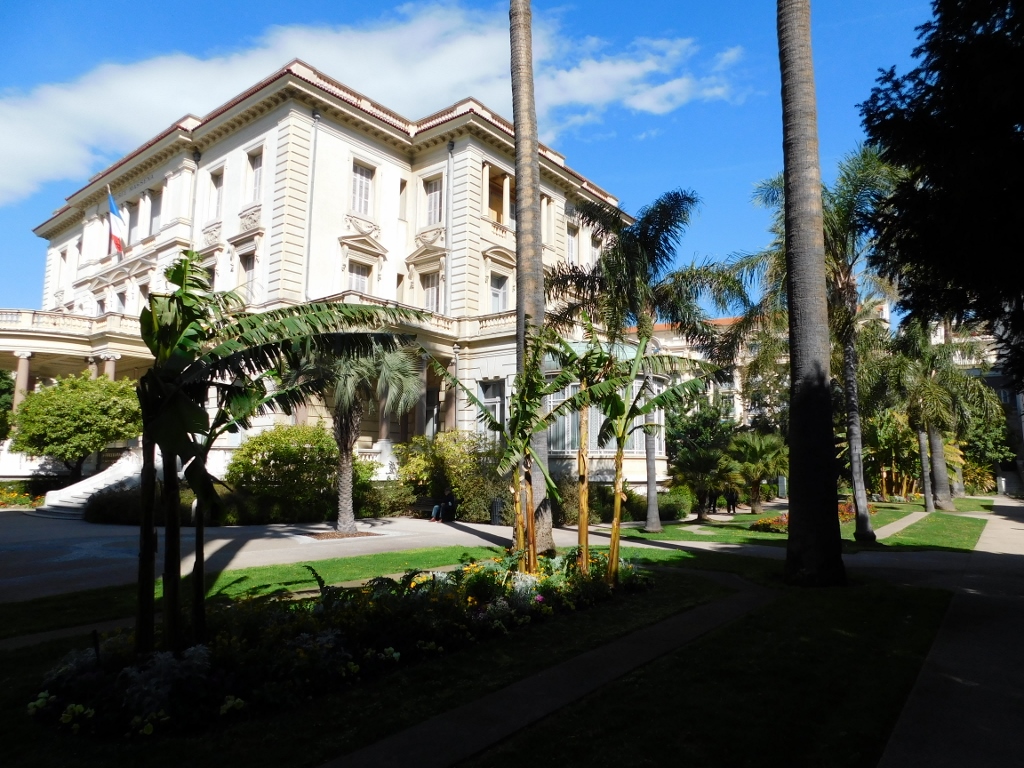 The Masséna Museum
The Masséna Museum
At the end of the 19th century, a French aristocrat, politician and military person wanted to build a large villa at a land plot by the promenade in Nice which he would use for entertainment and opulent parties. Parallel to the construction of the villa, a garden was developed on the remainder of the plot. In 1919, his son sold the whole property to the city of Nice under the condition that the villa is used as a museum and that the garden is open to public. All of this was restored at the beginning of the 21st century and I wanted to see it. After a short stroll around the garden, I even sat on a bench and enjoyed there for a while.
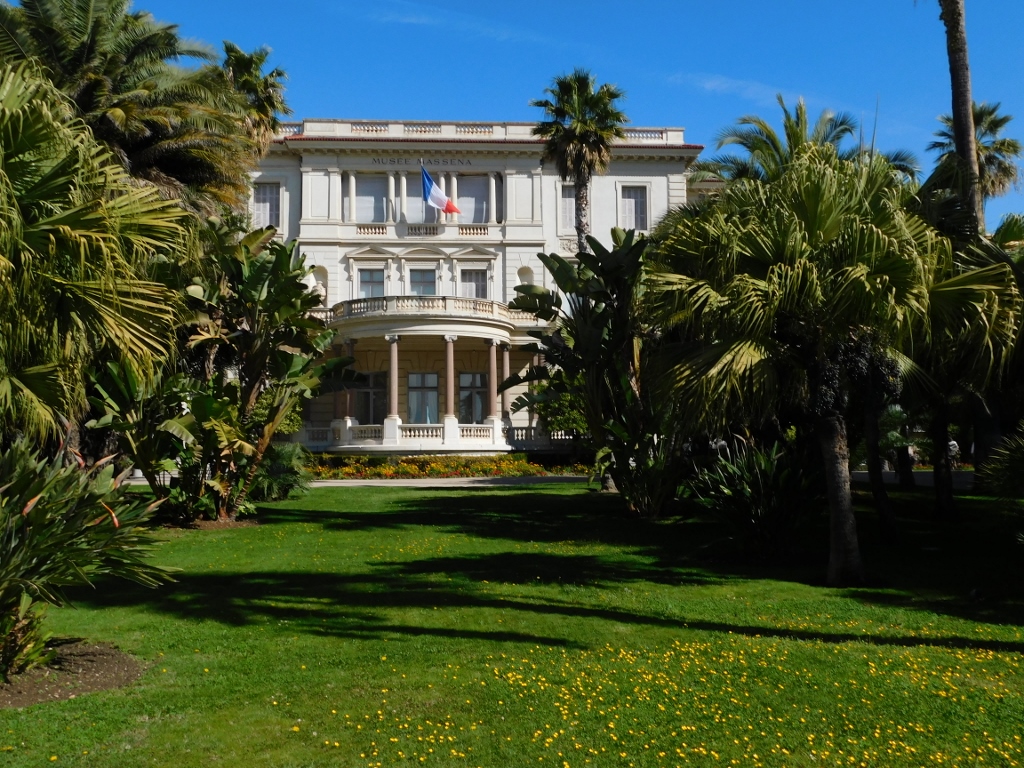 The Masséna Museum and Garden
The Masséna Museum and Garden
Following this pleasant break in the park, I started to go towards the Promenade des Anglais. Having crossed the street in one spot, I looked back towards the area where the Masséna Museum and its plot of land were. In the photo below, this is the space between two large buildings, one on the right-hand side of the photo and the other, a little farther away and to the left.
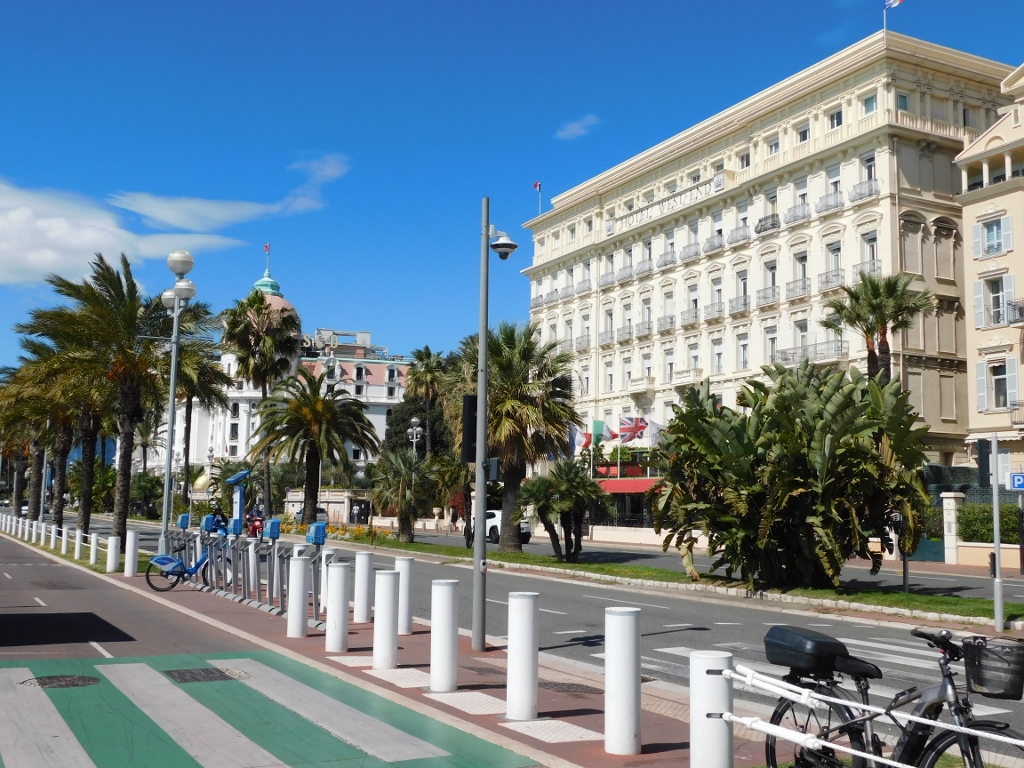 Nice, a detail
Nice, a detail
A few metres on, I was already by the fence of the promenade, admiring the beauty of the sight.
 Promenade des Anglais
Promenade des Anglais
 Promenade des Anglais
Promenade des Anglais
Although it was sunny, I thought it was still chilly, but that certainly did not stop some enthusiasts from soaking in the rays of the early spring sun. Very few of them even ventured inside the water.
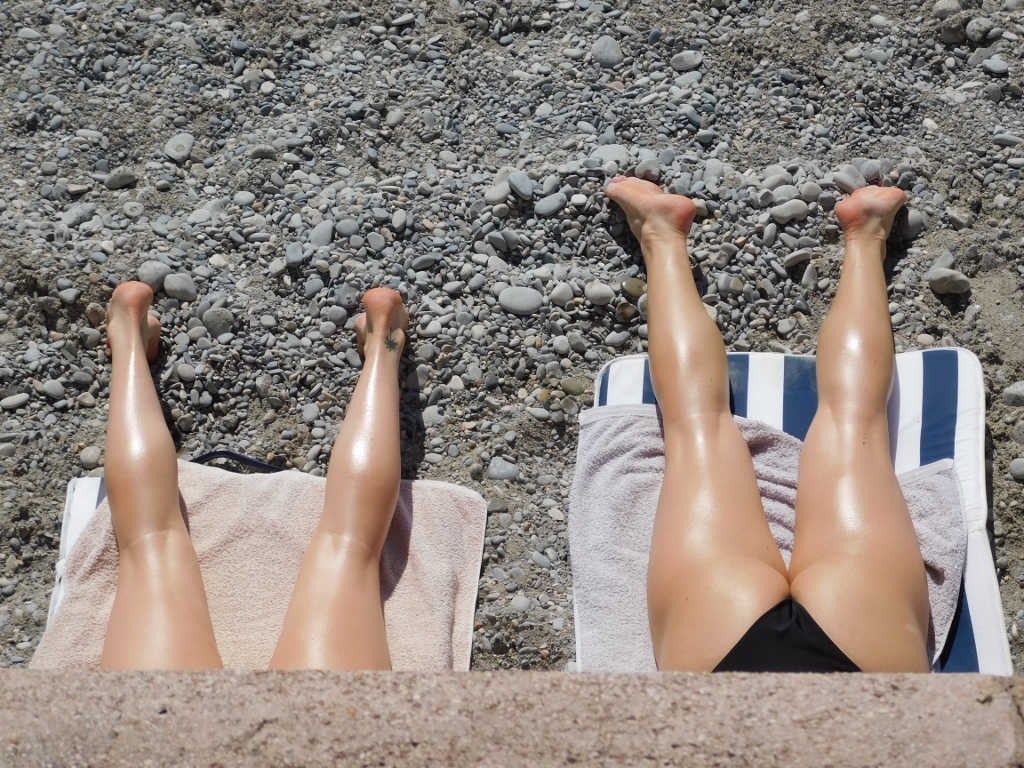 Nice beach, a detail
Nice beach, a detail
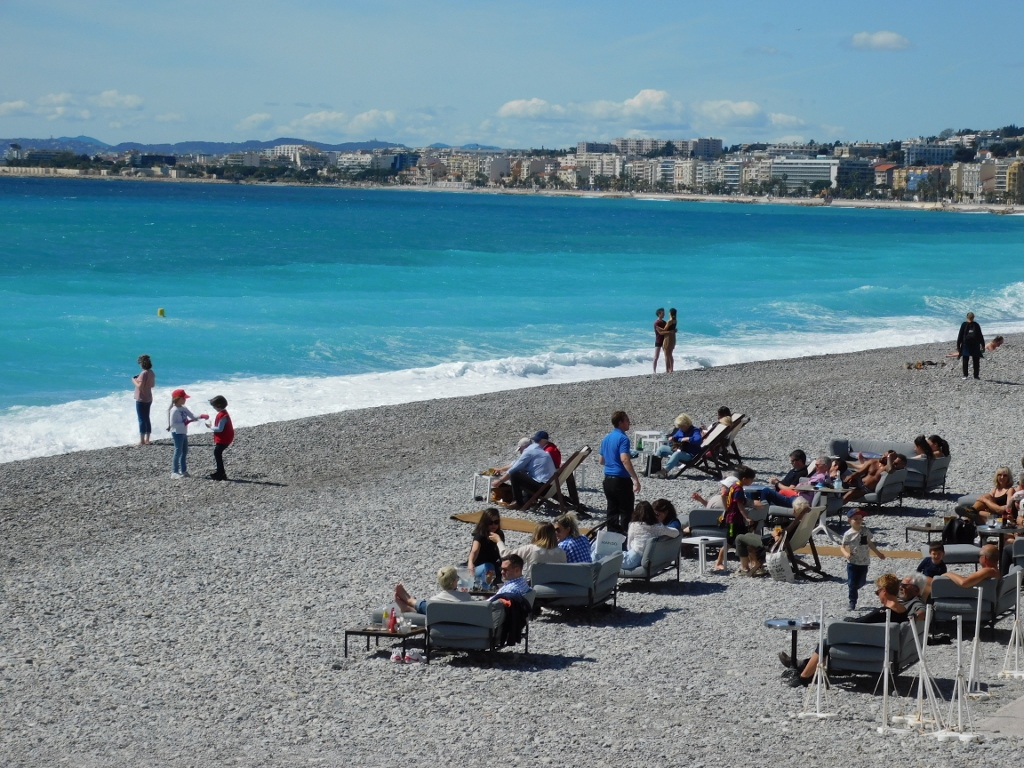 Nice beach, a detail
Nice beach, a detail
After I had enjoyed the stroll by the sea, I reached Old Nice and then I started to walk along the streets in this part of the city. First I passed by the Opera building from 1885.
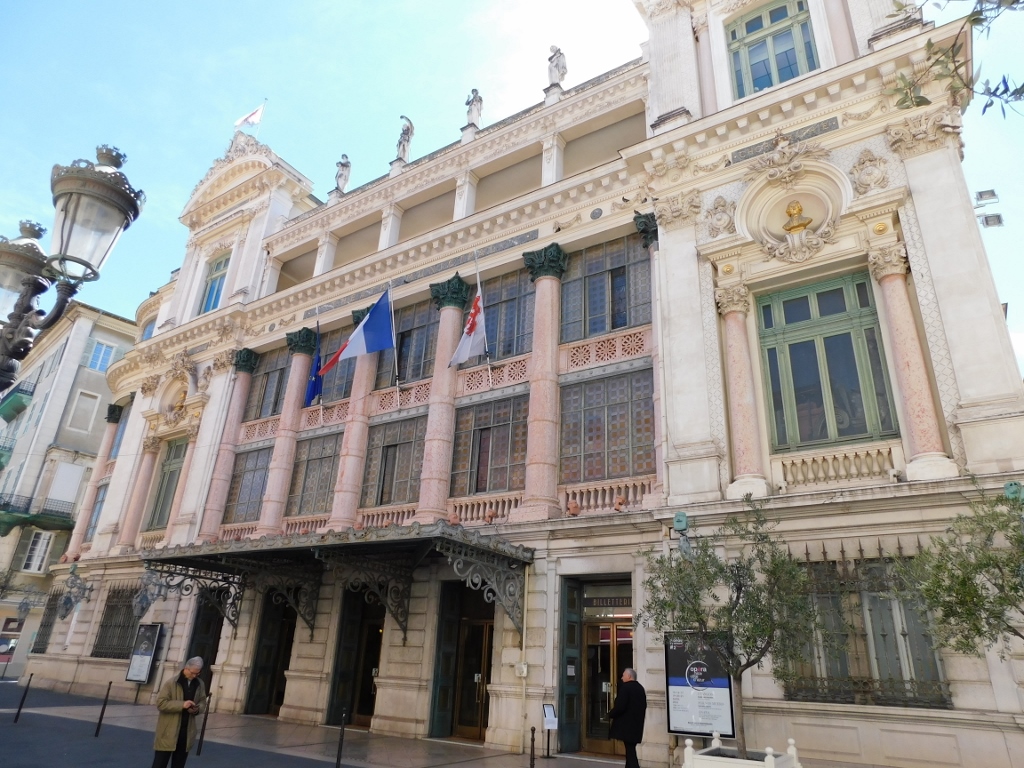 Opera building in Nice
Opera building in Nice
Only some hundred metres farther there is a renowned landmark of Nice and that is the Flower Market (Marche aux fleurs cours saleya).
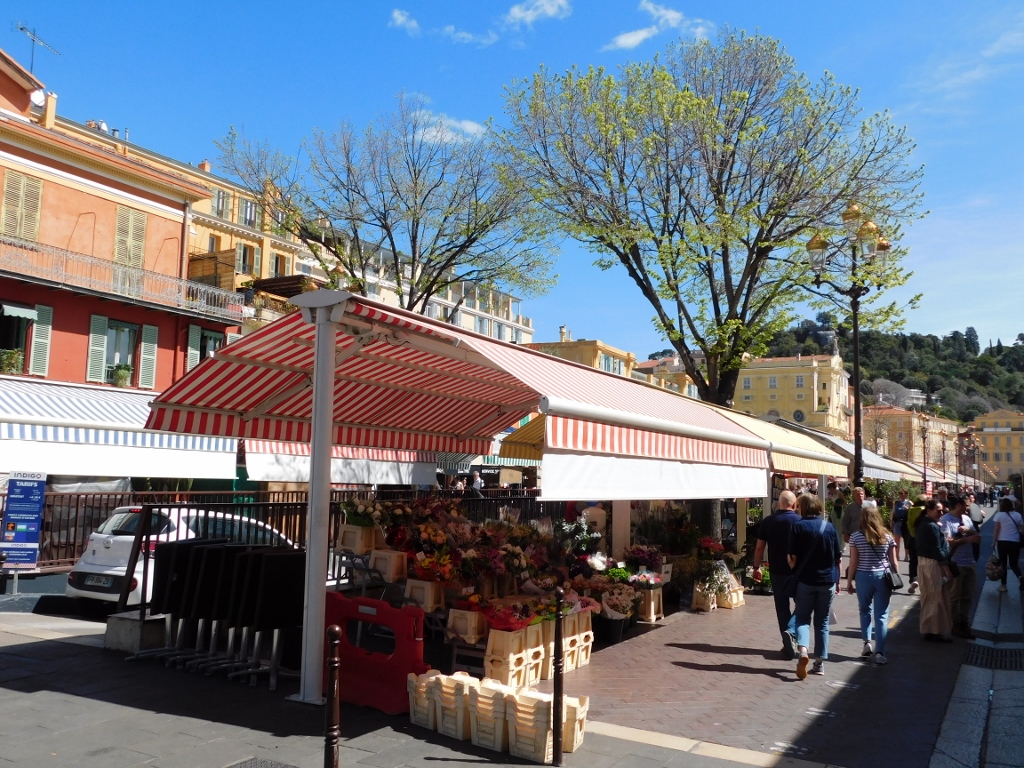 Flower Market in Nice
Flower Market in Nice
This is one of the sites which all guidebooks emphasise as a must and I certainly liked my visit here, because the flowers were really pretty.
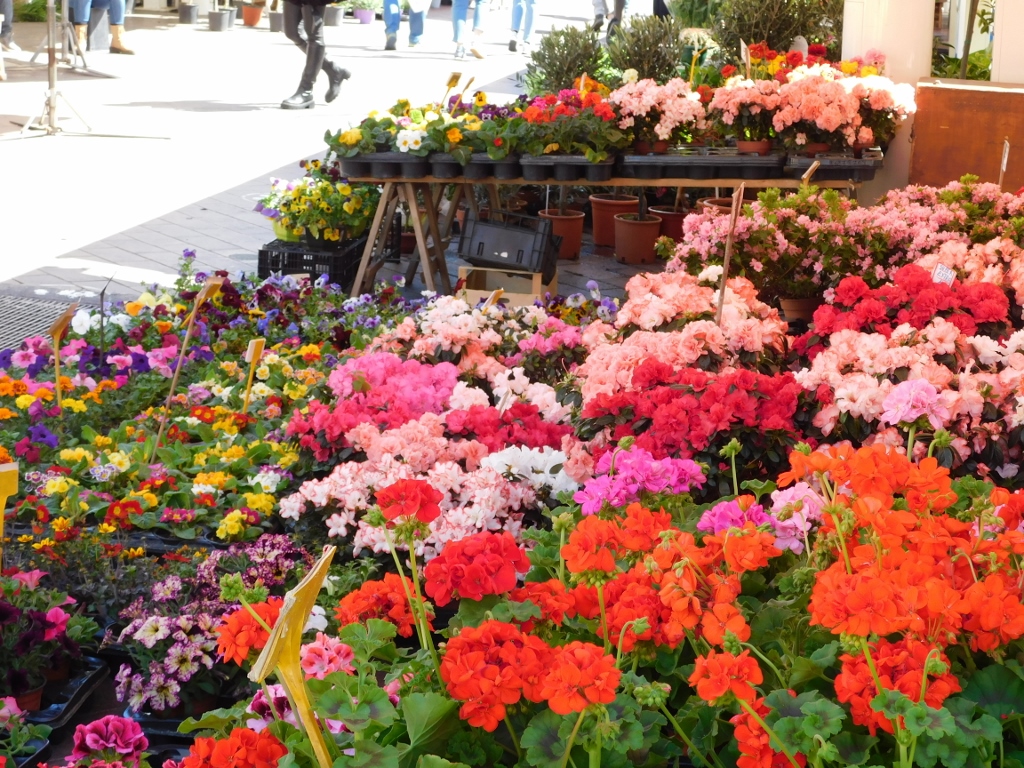 Flower Market in Nice, a detail
Flower Market in Nice, a detail
And yet, I could not help but think that back in Belgrade I live relatively close to a green market and that their flower offer is even bigger than here in Nice. Admittedly, Belgrade has a different climate in comparison to Nice, with very cold winters, and so this flower market in Belgrade does not operate fully throughout the year. I’m also sure that many other European and world towns have impressive flower markets, but... This is Nice and the French Riviera, and then everything, especially marketing, is amplified.
Be as it may, the Flower Market in Nice offers other products as well, since this is a popular place amongst visitors and it is suitable to have other goods on offer available. Among other things, there were different sweets and lavender, for this is also Provence.
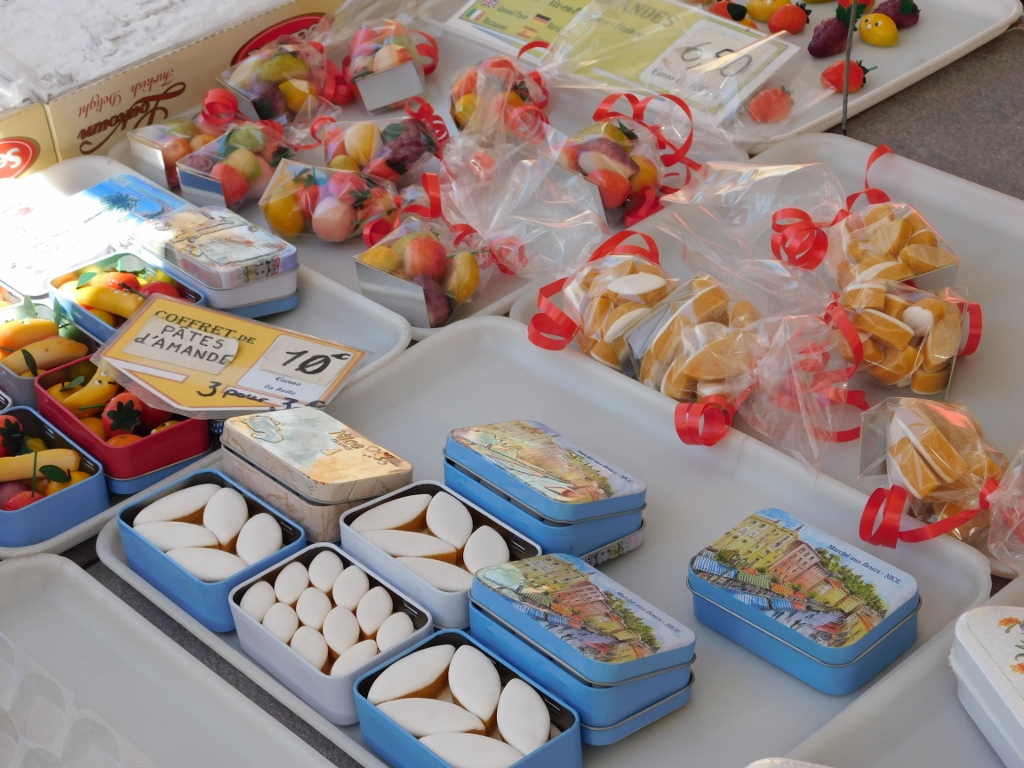 Flower Market in Nice, a detail
Flower Market in Nice, a detail
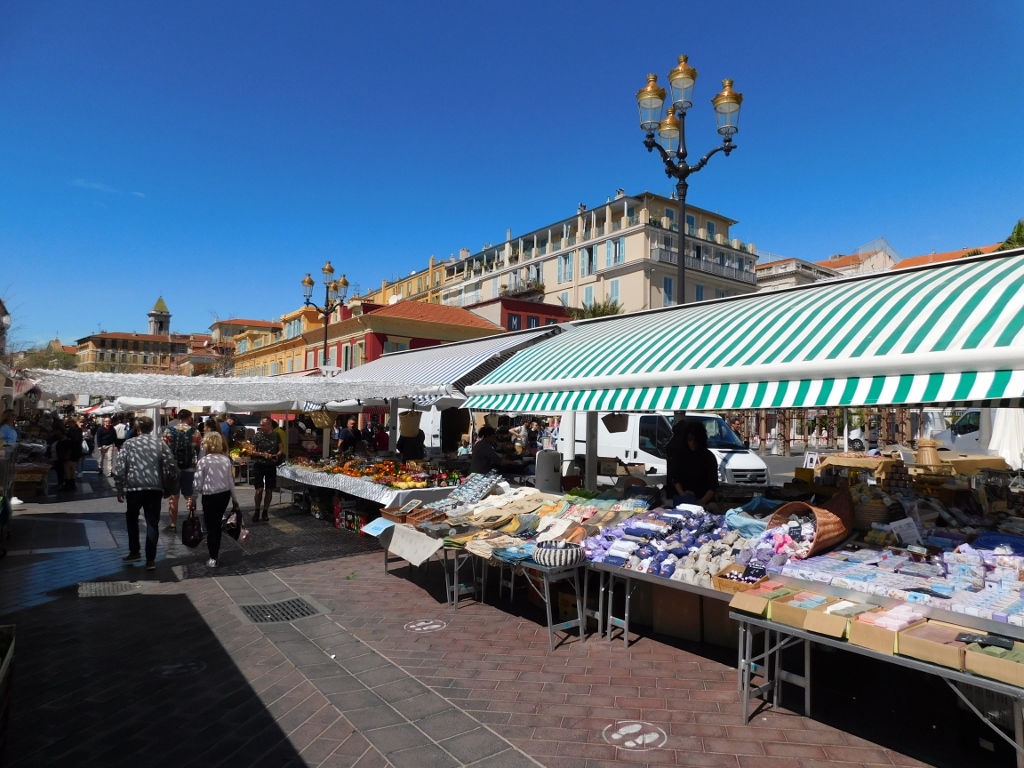 Flower Market in Nice, a detail
Flower Market in Nice, a detail
After this I simply continued to walk around the city, without any specific plan. I went a little to the left, a little to the right, a little through the old part of Nice and a little through the newer part of Nice. And everywhere I could see some pretty or interesting details. Some of these places I had already seen before and some others were new to me. What I want to say is that even without visits to some “landmarks,” Nice can be very pleasant also for superficial sightseeing.
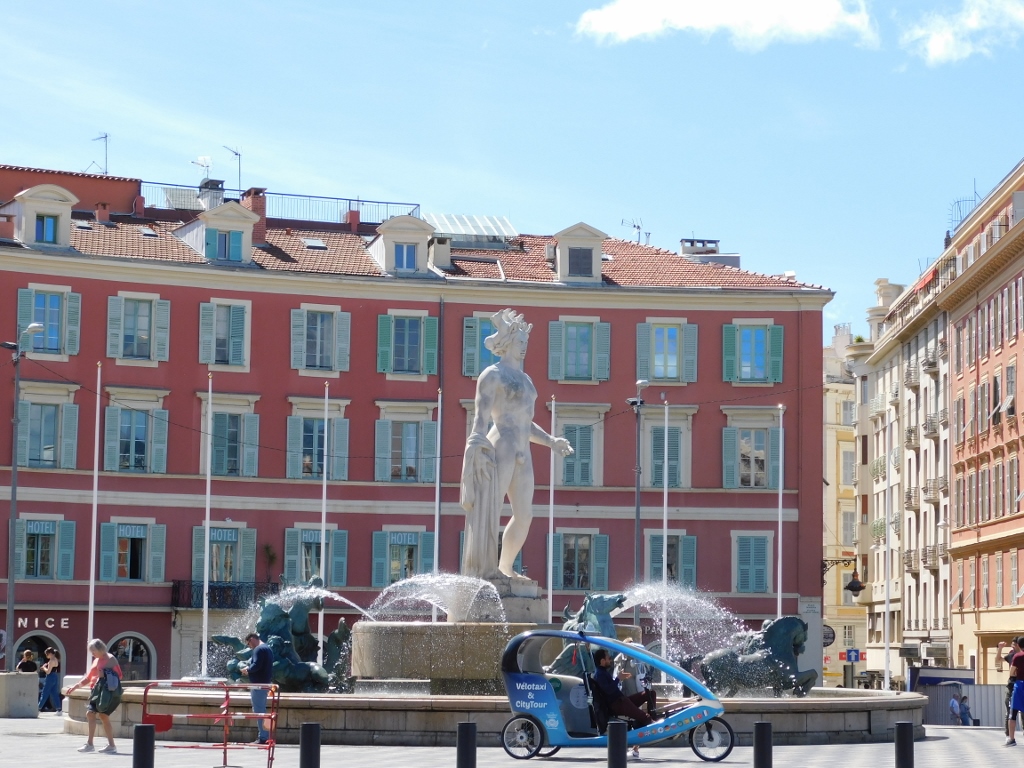 Fontaine du Soleil and an interesting blue bicycle-taxi
Fontaine du Soleil and an interesting blue bicycle-taxi
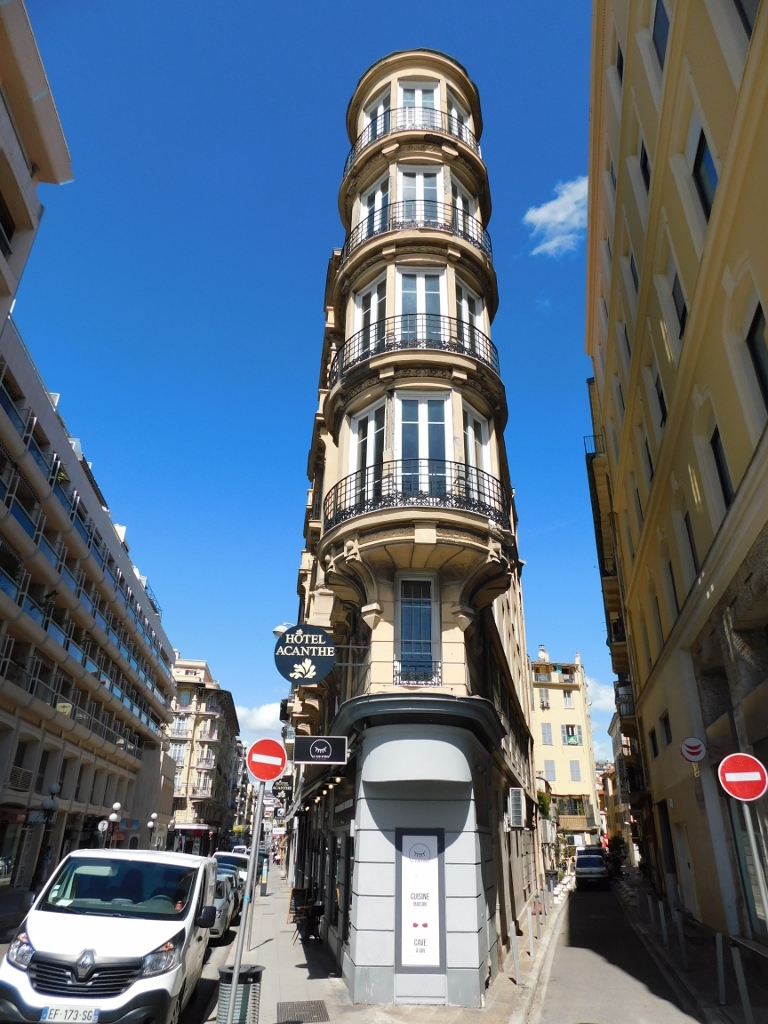 Nice, a detail
Nice, a detail
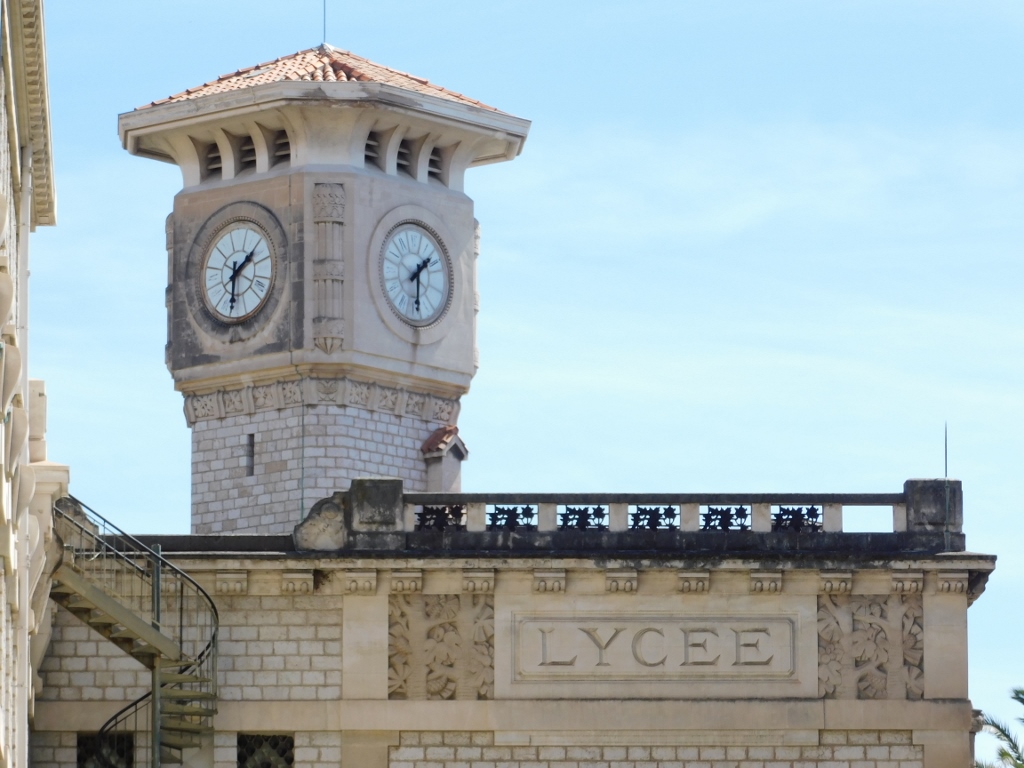 Nice, a detail
Nice, a detail
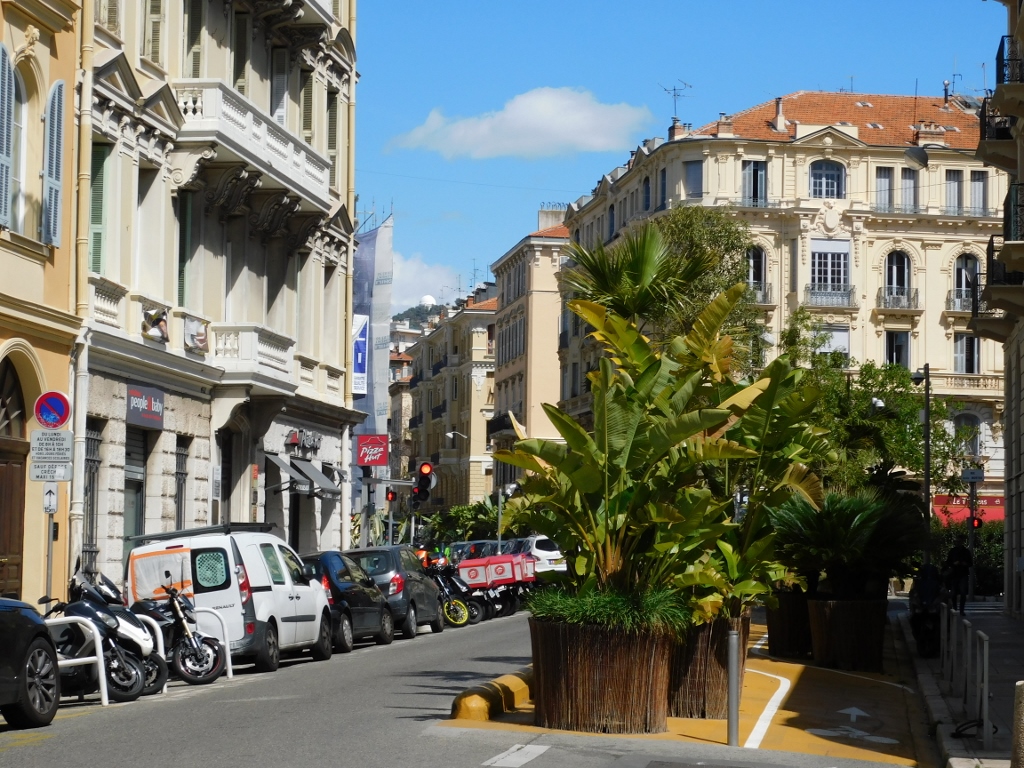 Nice, a detail with huge “flowerpots” and greenery
Nice, a detail with huge “flowerpots” and greenery
When I approach Old Nice again, at some point I could see Saint-François Tower (Tour Saint-François) nicely. It was built in the 13th century and it was a part of a church and monastery then, but over time it was turned into a clock tower. In 2019, a staircase was built within the tower and nowadays, if you are ready to face 288 steps and climb the height of 50 m, you can enjoy a fine view and also possibly listen to its bells from direct proximity.
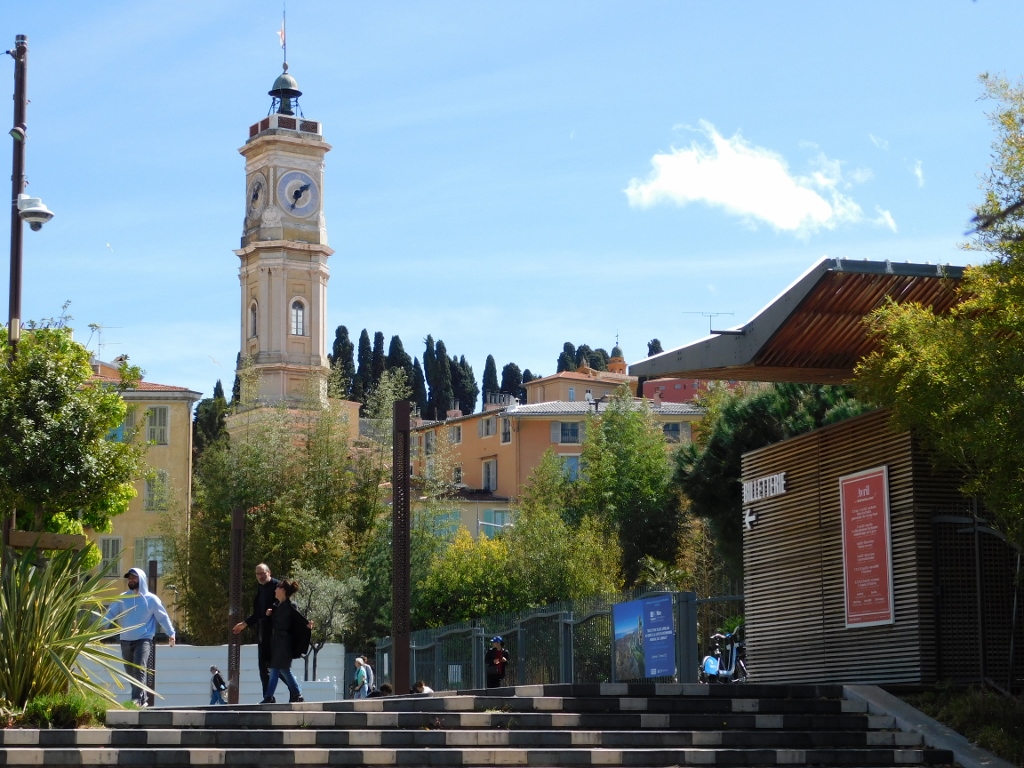 Nice, a detail with Saint-François Tower
Nice, a detail with Saint-François Tower
Soon I got to the Church of Saint Martin and Saint Augustine (Église Saint-Martin, Saint-Augustin), one of the oldest in this part of Nice. The Baroque church that can be seen here today actually replaced the old Gothic one and was built in the 17th century.
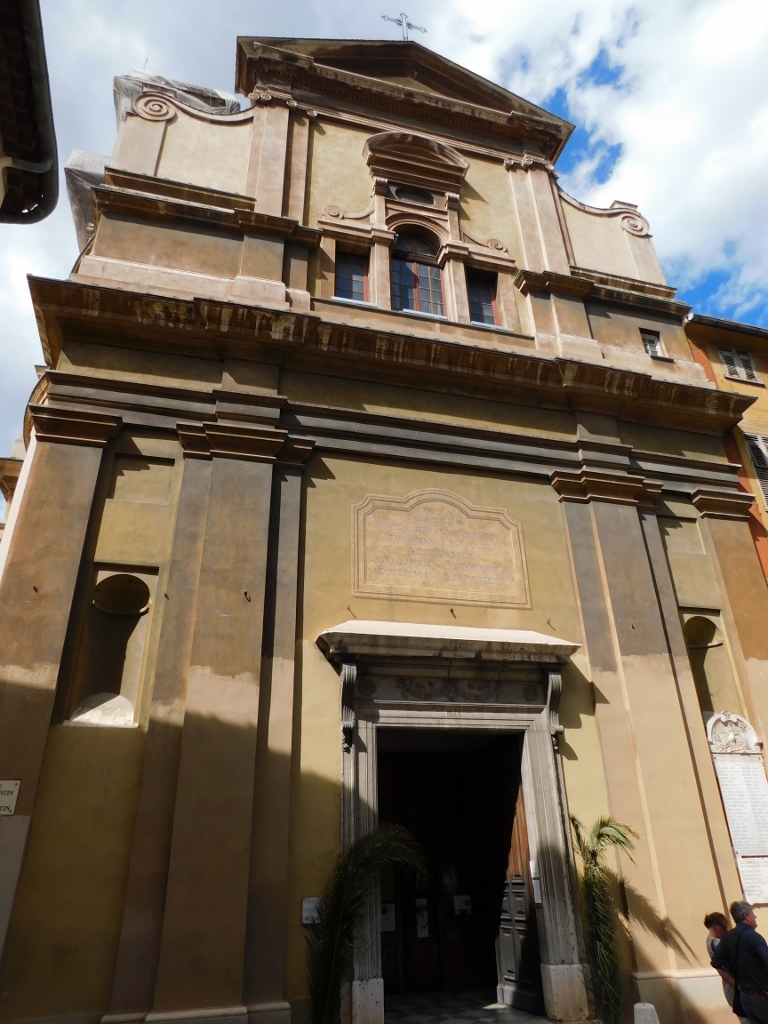 Church of Saint Martin and Saint Augustine
Church of Saint Martin and Saint Augustine
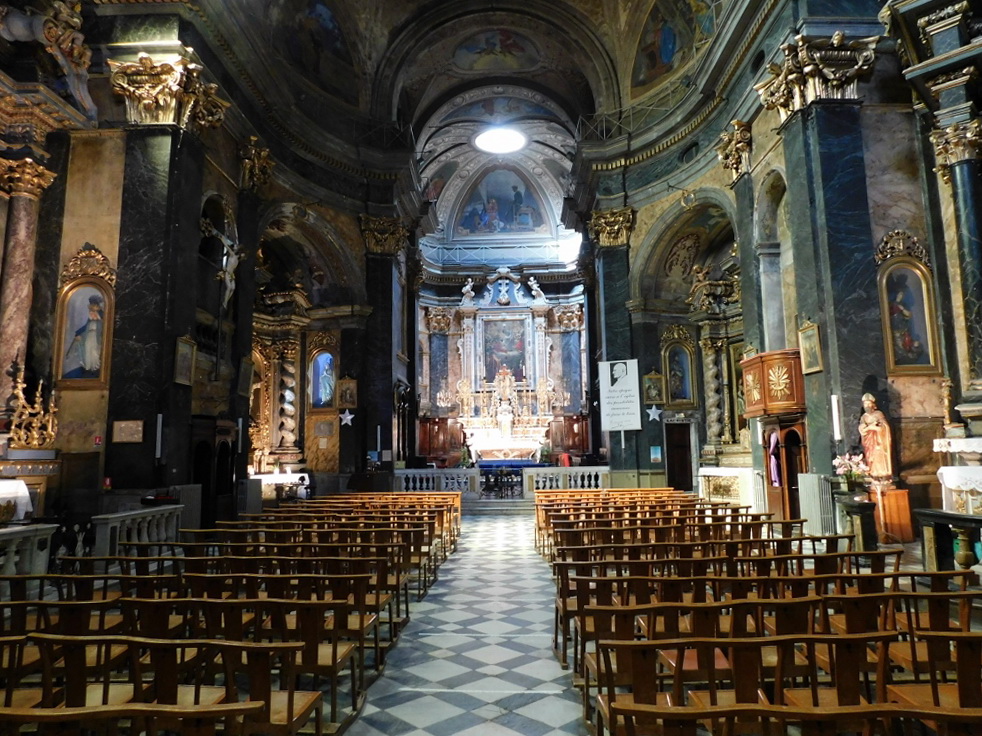 Church of Saint Martin and Saint Augustine
Church of Saint Martin and Saint Augustine
Following my visit to this church I returned from the old part of Nice to the flat in which I was staying in order to have some rest and only later in the afternoon I went for a walk again. I was again inclined to go to Old Nice, but along the way I passed by the Basilica of Notre-Dame de Nice (Basilique Notre-Dame de Nice) and now I finally decided to visit it.
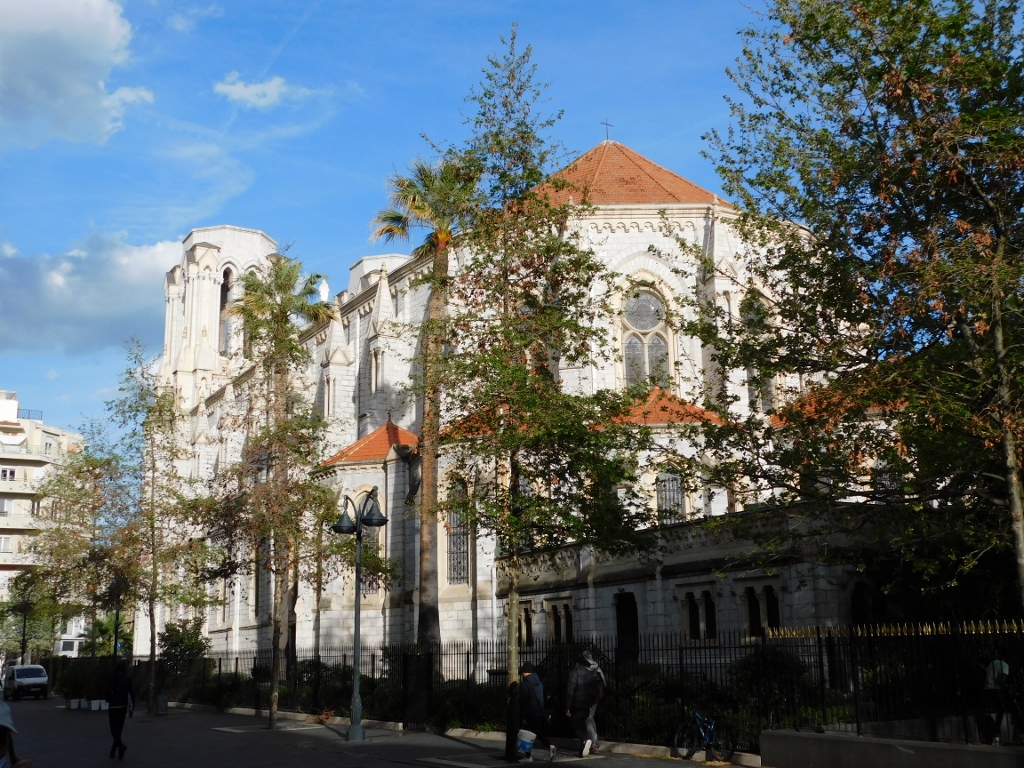 Basilica of Notre-Dame de Nice
Basilica of Notre-Dame de Nice
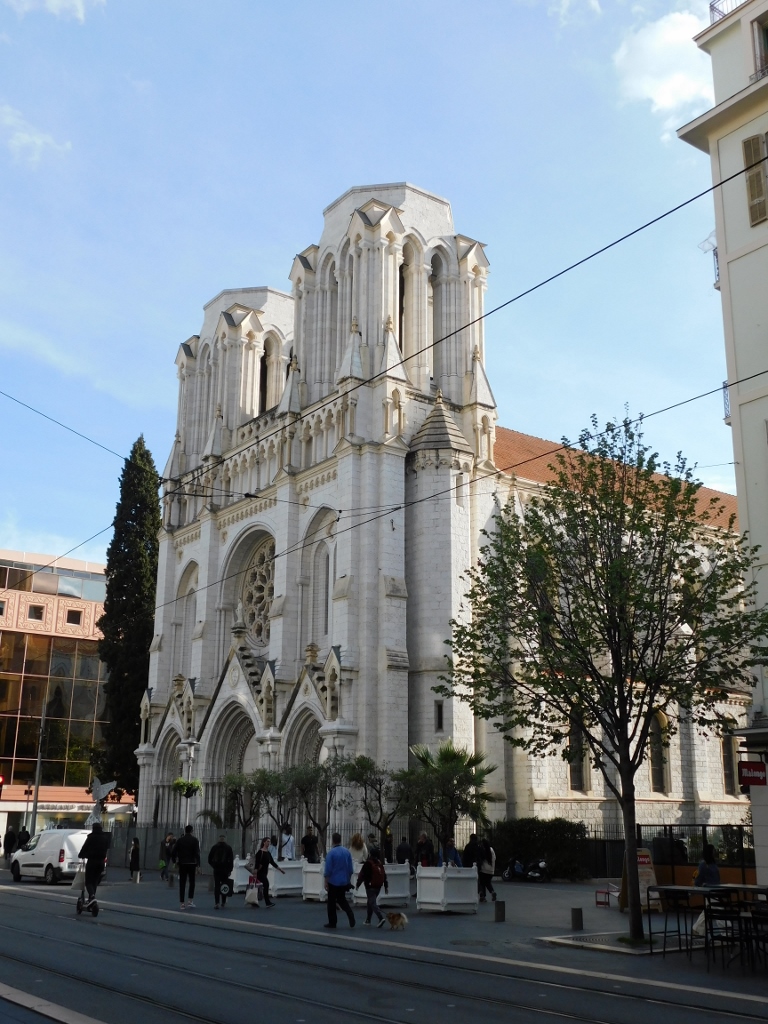 Basilica of Notre-Dame de Nice
Basilica of Notre-Dame de Nice
After France had annexed the County of Nice in 1860, there was a desire to bring more French architecture into the city and thus this church was built in the Neo-Gothic architectural style from 1864 to 1868. This is also the biggest church in the city, but it is not the cathedral.
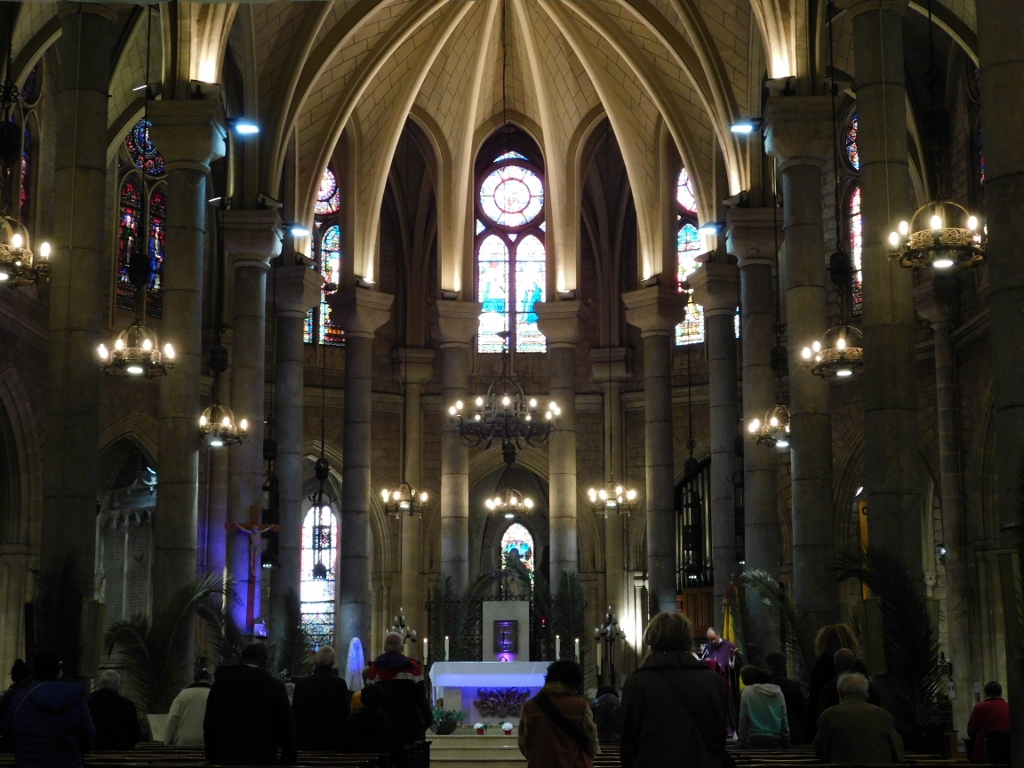 Basilica of Notre-Dame de Nice, the interior
Basilica of Notre-Dame de Nice, the interior
Now I headed for the cathedral in Nice that is located in the old part of the city, but beforehand I walked again across the impressive Place Masséna that was designed in 1815 under strong Italian influence.
 Place Masséna
Place Masséna
Some 10-15 minutes later I reached Nice Cathedral (Cathédrale Sainte-Réparate de Nice), but it was closed. I comforted myself with an ice-cream that I bought at the square in front of the cathedral where there are several ice-cream parlours. In addition to a chocolate scoop, I also took a scoop of lavender; after all I was in Province.
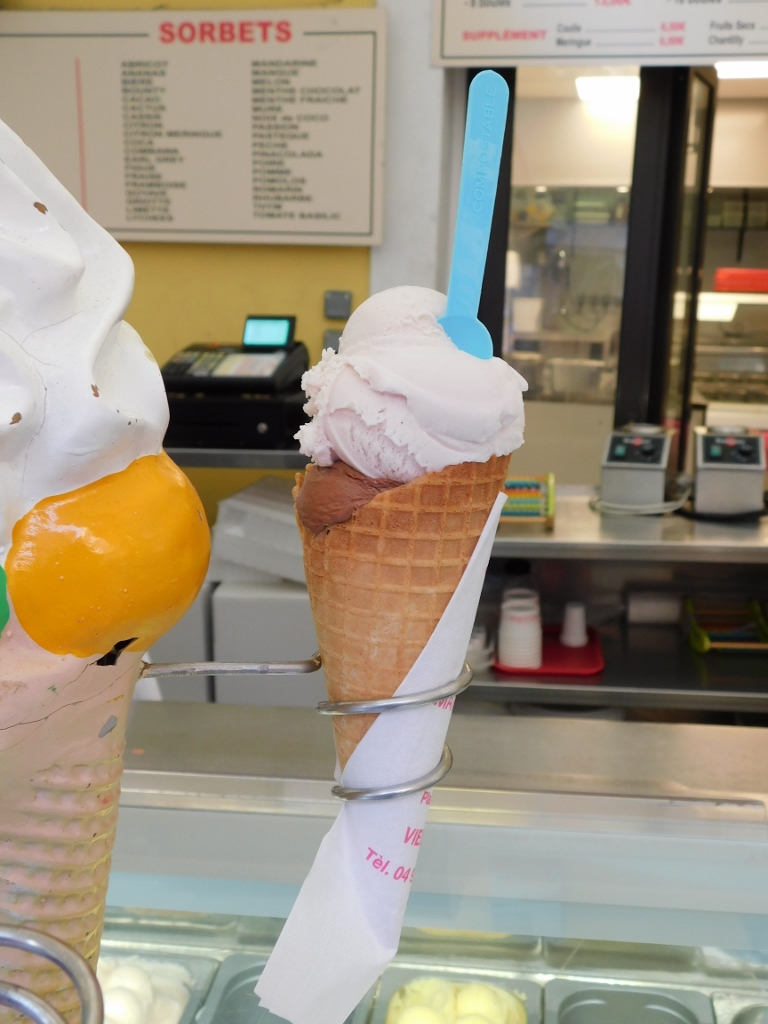 Ice-cream in Nice
Ice-cream in Nice
Meanwhile it had become very windy. I found a place where I could tuck myself in order to have the ice-cream in peace and then I went to the shore. On the one side the wind powerfully pushed palm branches and on the other side the sea was very turbulent.
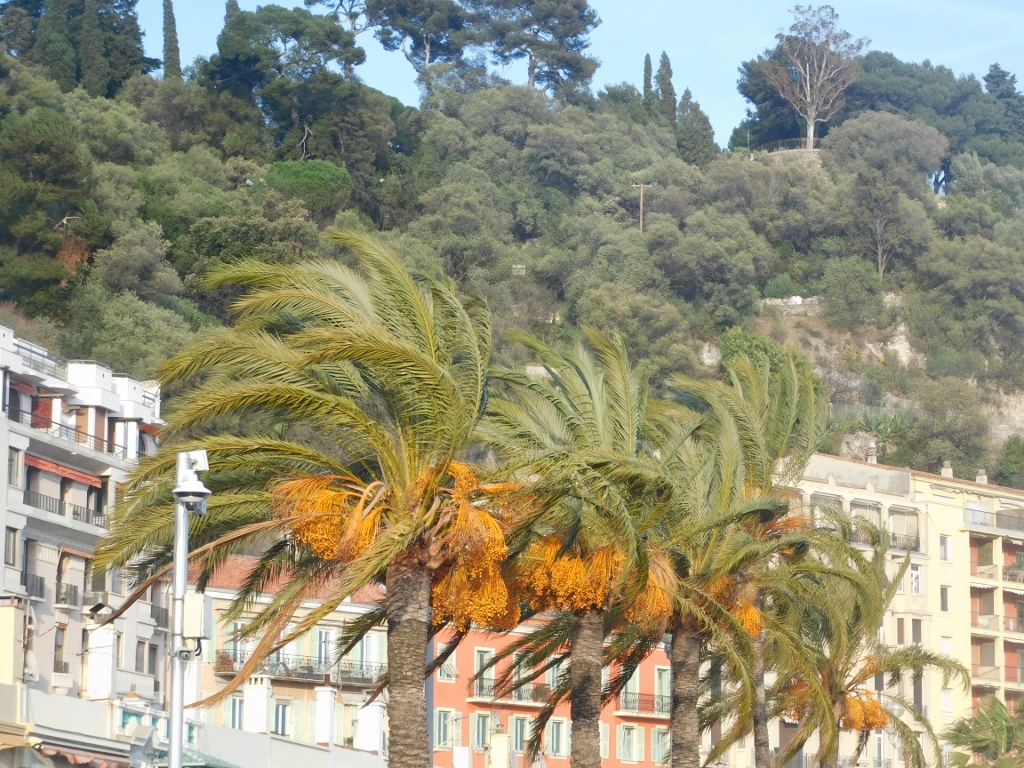 Nice when it’s very windy, a detail
Nice when it’s very windy, a detail
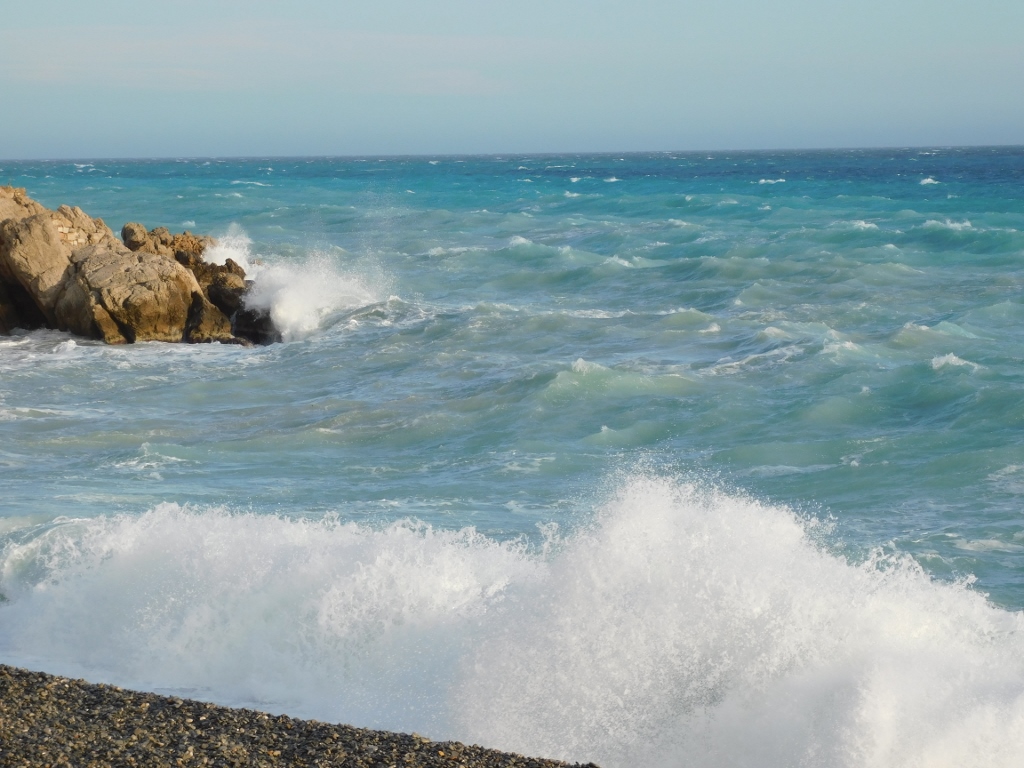 Nice when it’s very windy, a detail
Nice when it’s very windy, a detail
The wind also carried towards the land the tiny droplets of seawater dispersed by the waves and this created some mystical sights.
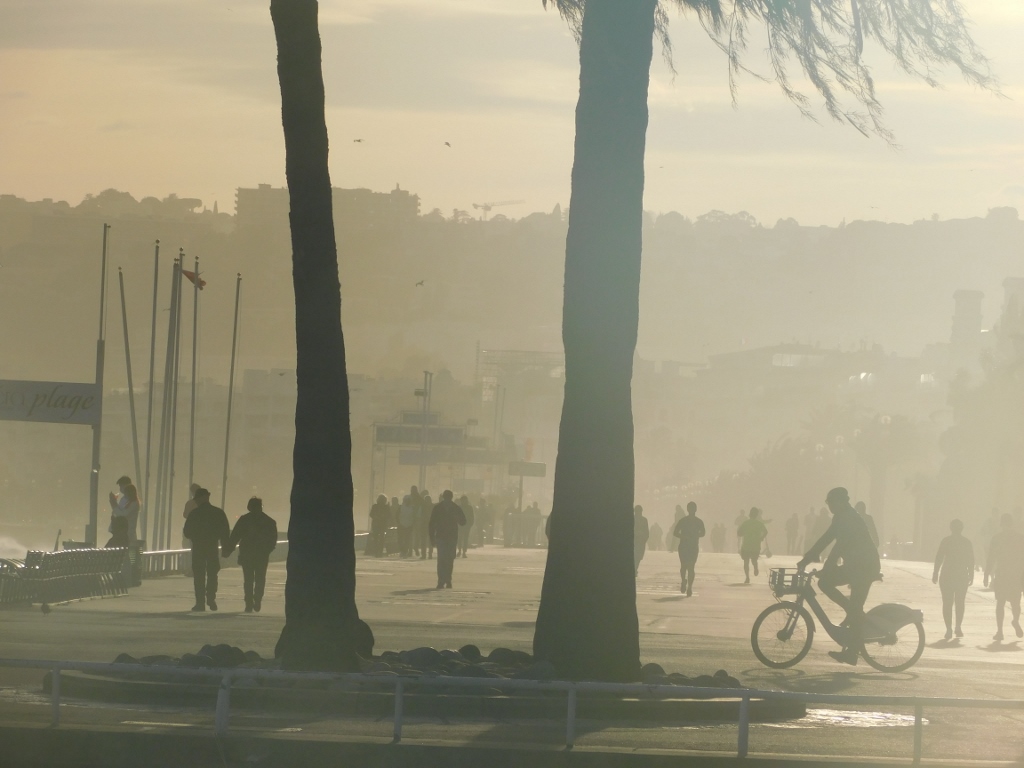 Promenade des Anglais in the mist created by minute seawater droplets
Promenade des Anglais in the mist created by minute seawater droplets
I realised I actually did not like this strong wind and then going through a relatively spacious park beside the promenade I moved away from the shore and entered the city itself. As it turned out, quite accidently, I passed through Rue Paradis, a street full of high-priced shops. There was nothing for me there, but at the end of that street I reached Place Magenta, a square with several cafés and restaurants. A little earlier a friend of mine had asked me to have a cocktail on her behalf and here I thought that this was the right place for something like this. I love my friends.
 Part of the Place Magenta, Rue Paradis is straight leading to the park and the shore
Part of the Place Magenta, Rue Paradis is straight leading to the park and the shore
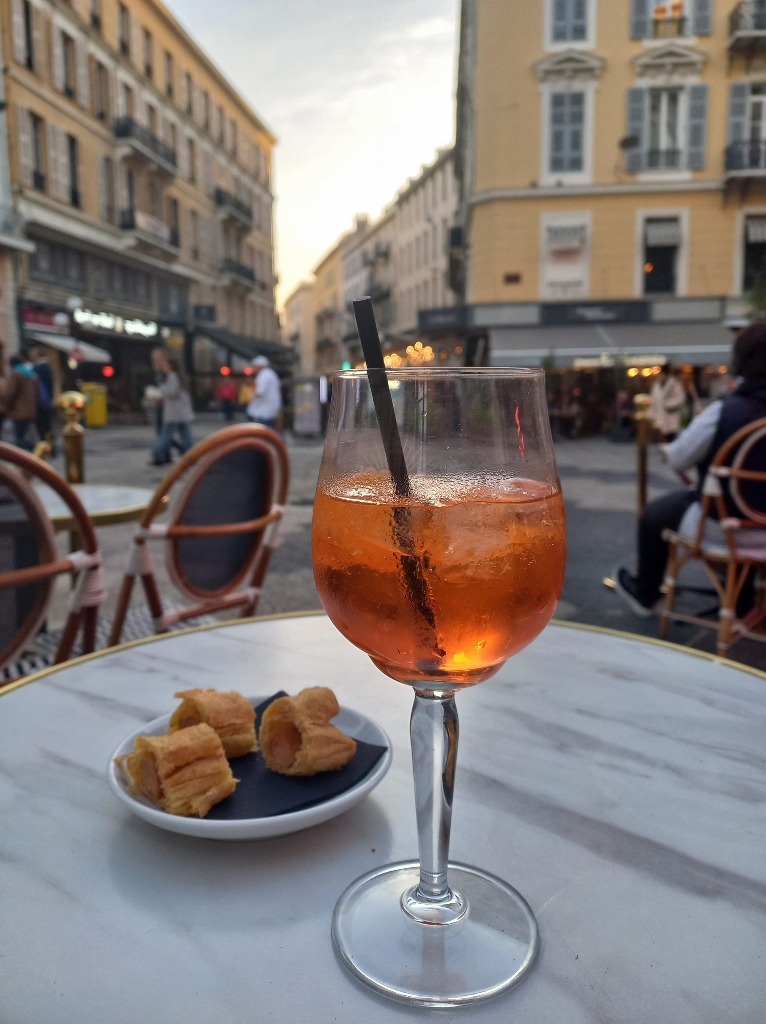 Having a cocktail and thinking of Vesna
Having a cocktail and thinking of Vesna
I had my flight back home the next day, but only in the afternoon, so I had enough time to organise some more sightseeing for myself. To start with, I headed for a museum, but along the way I passed by a Buddhist temple, Từ Quang Pagoda Nice, and since it was open, I entered the courtyard. It was very peaceful and I did not see anywhere if I could enter the temple itself, but even the courtyard was interesting.
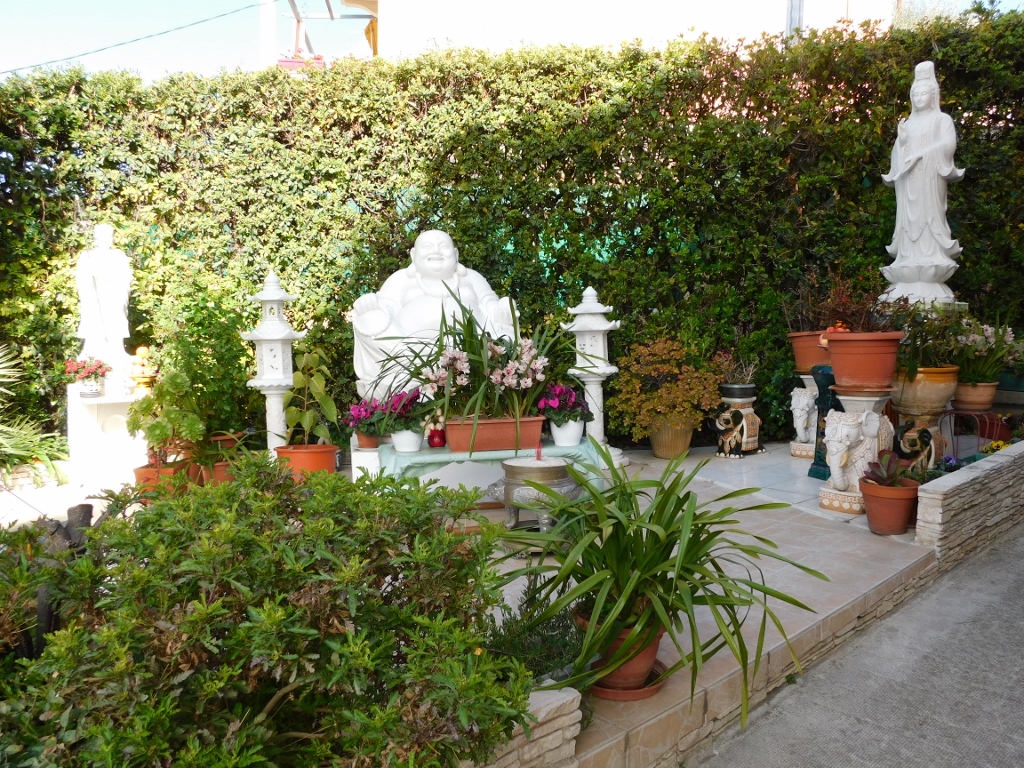 Từ Quang Pagoda Nice
Từ Quang Pagoda Nice
Then I continued to the nearby Marc Chagall National Museum (Musée National Marc Chagall). As its name says, the museum is dedicated to the works of Marc Chagall (1887-1985), specifically, this is the place that exhibits a series of paintings on the topic of the Bible which the author did under the name of “Biblical Message” and which he donated to the French state in 1966. The museum was opened in 1973 and over time it has expanded its original collection, making it today one of the largest collections of the works by this artist.
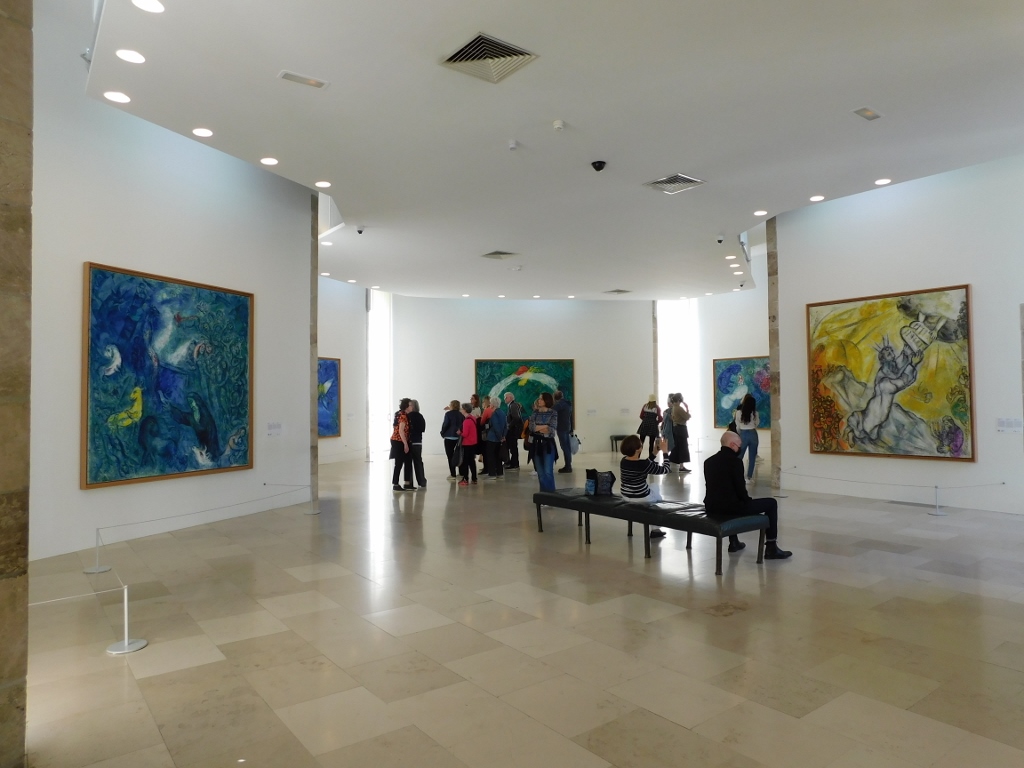 The Marc Chagall National Museum
The Marc Chagall National Museum
What makes this museum particularly remarkable is that this was the first museum ever to be dedicated to a living artist (at the time when the museum was first opened, Marc Chagall was fully alive).
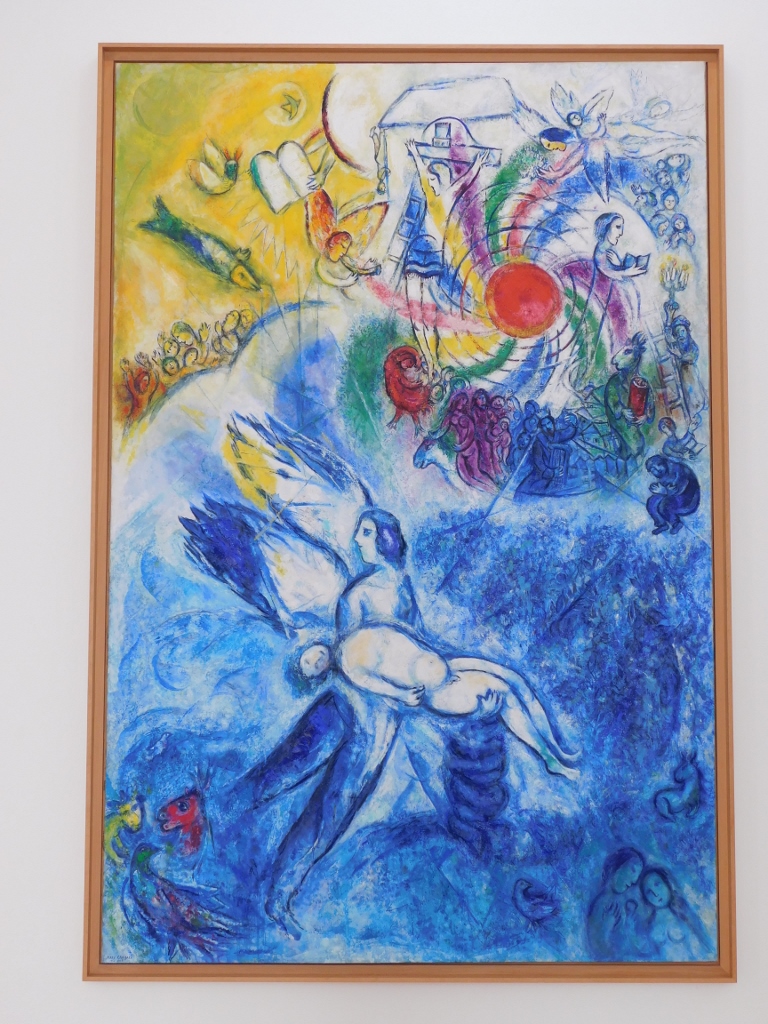 The Creation of Man
The Creation of Man
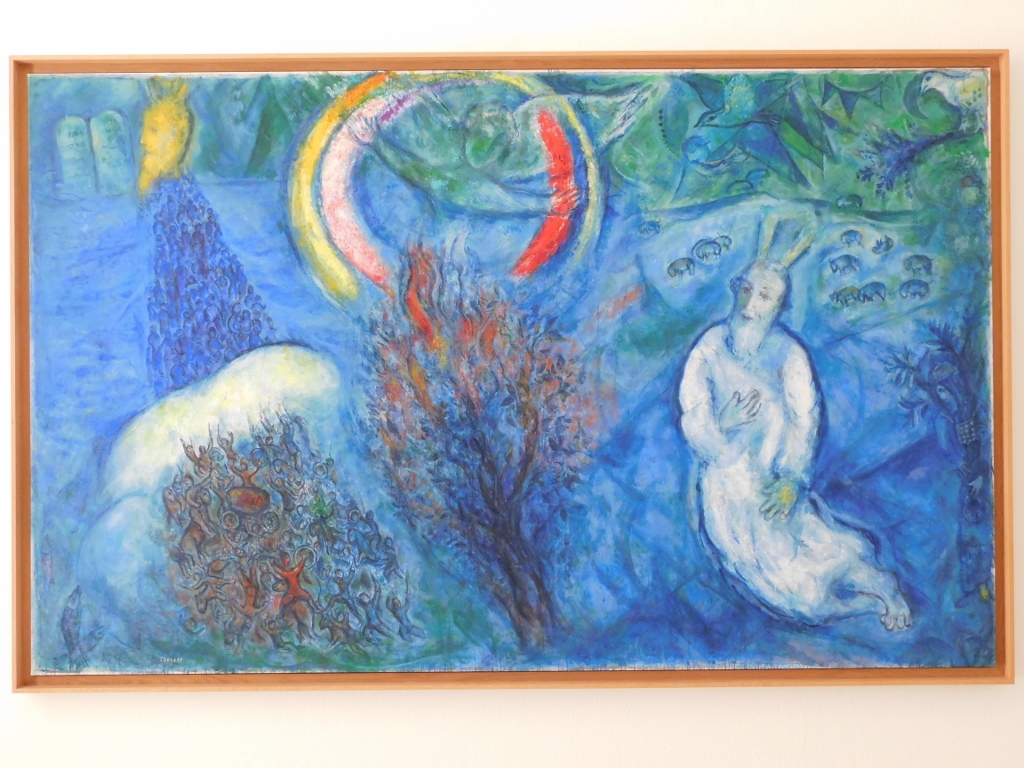 Moses and the Burning Bush
Moses and the Burning Bush
In addition to the paintings, the museum also exhibits Chagall’s stained glass, pottery and tapestries.
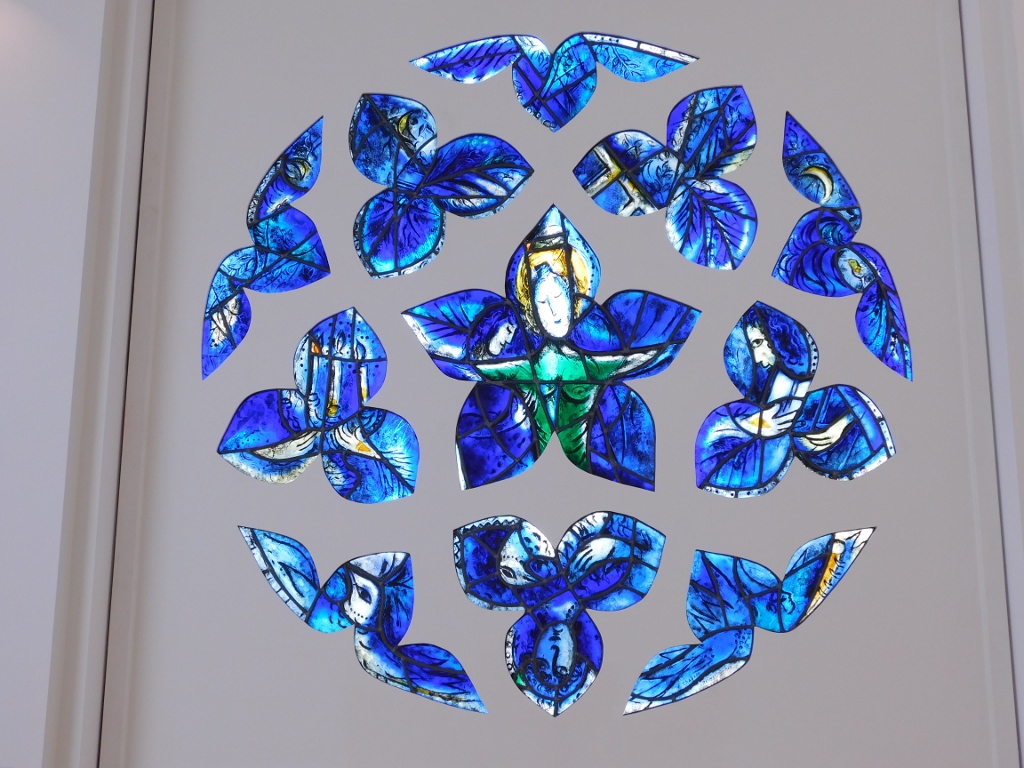 La Rose Bleue
La Rose Bleue
There is also a concert hall within the museum and the natural light comes here through Chagall’s stained glass windows with the sights of the creation of world.
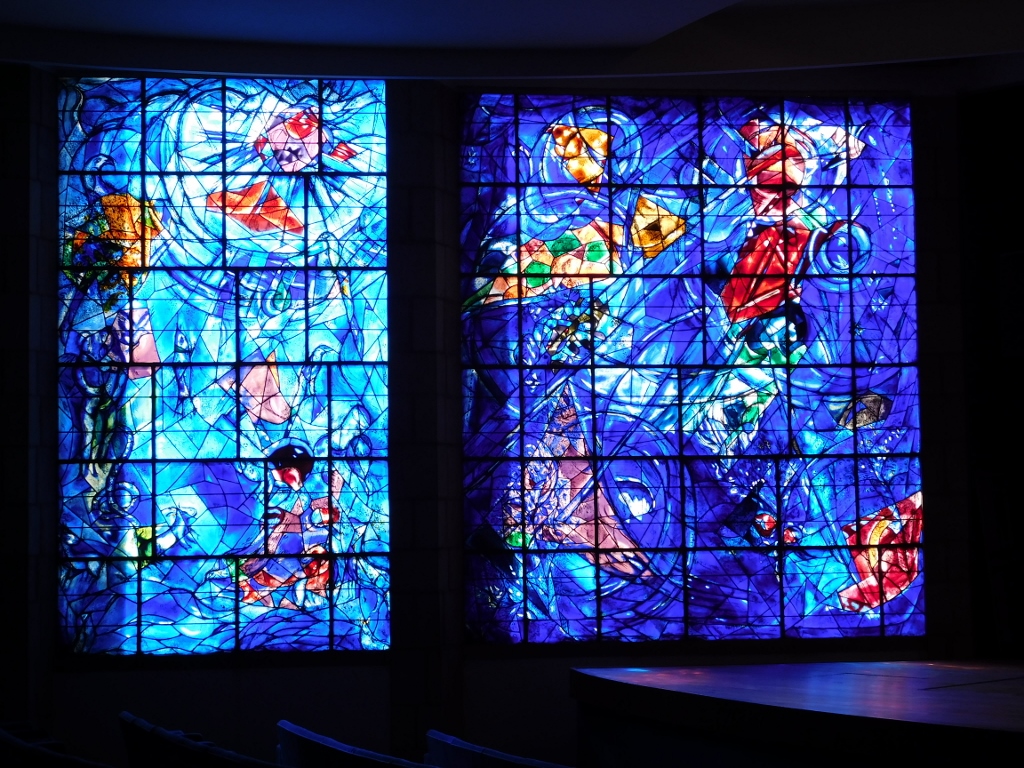 The Creation of World, a part of the stained glass windows
The Creation of World, a part of the stained glass windows
Following my visit to the museum, I headed for the old part of Nice, but from one street I had a lovely view at the Basilica of Notre-Dame de Nice that I have already written about and here it is.
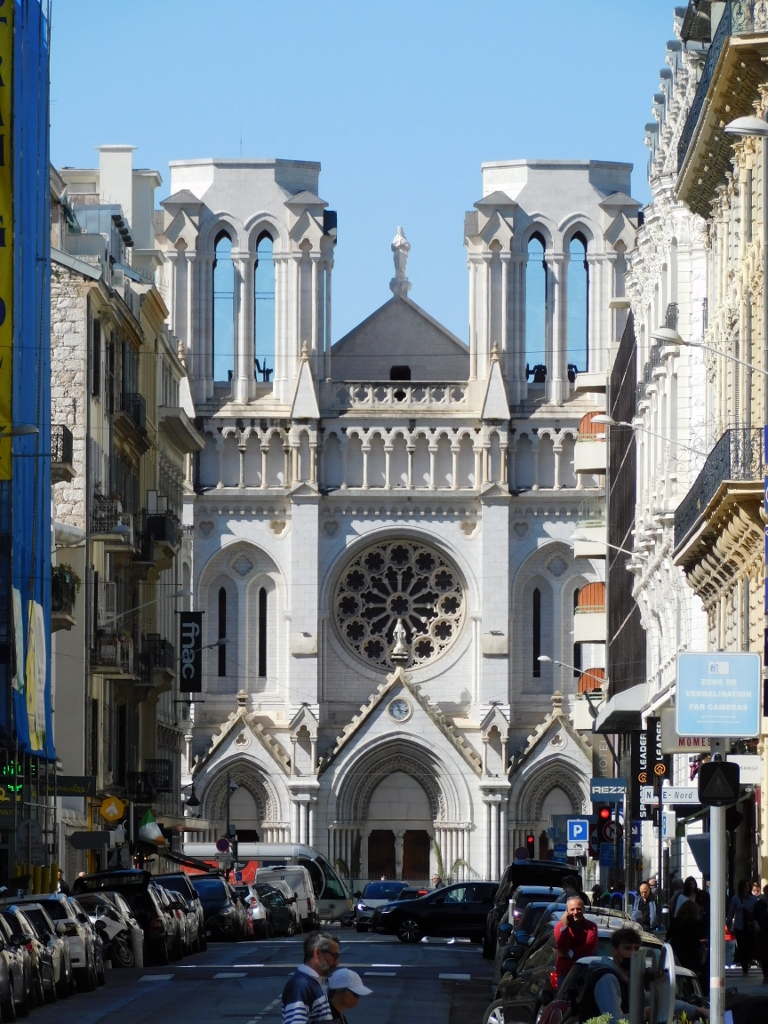 Basilica of Notre-Dame de Nice
Basilica of Notre-Dame de Nice
Like on the previous day, after I walked past this church I went to the Cathedral in Old Nice, but this time around I could enter since it was open.
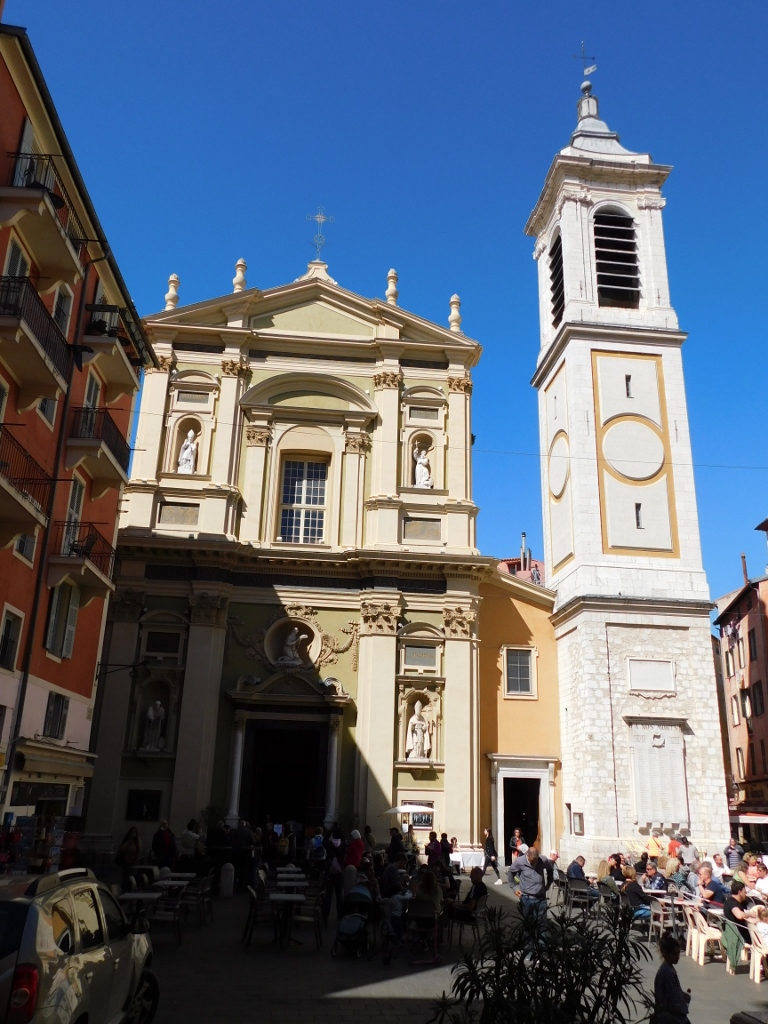 Nice Cathedral
Nice Cathedral
The Cathedral that is dedicated to Saint Reparata and is hence often referred to under that name, Cathédrale Sainte-Réparate de Nice, was built in the Baroque style in the second half of the 17th century, although the first chapel at this site was built already back in 1060. The Cathedral later had extensions built and was additionally decorated up until 1949.
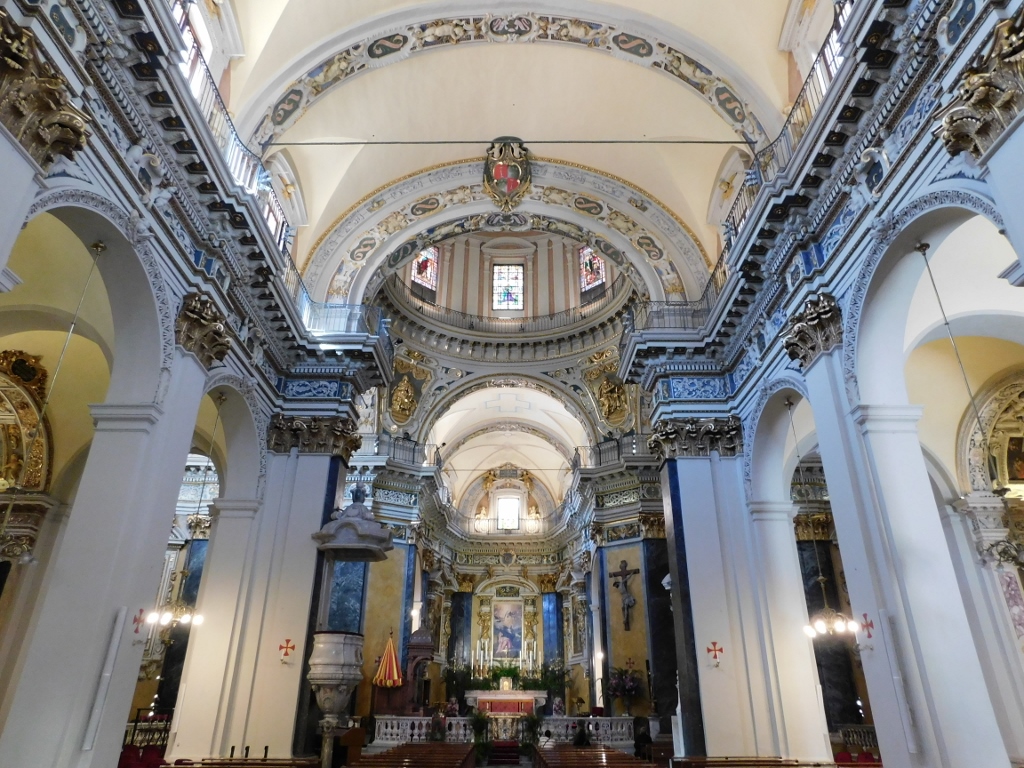 Nice Cathedral
Nice Cathedral
Having visited this church as well, I continued with my leisure stroll along the streets of Old Nice walking towards Garibaldi Square.
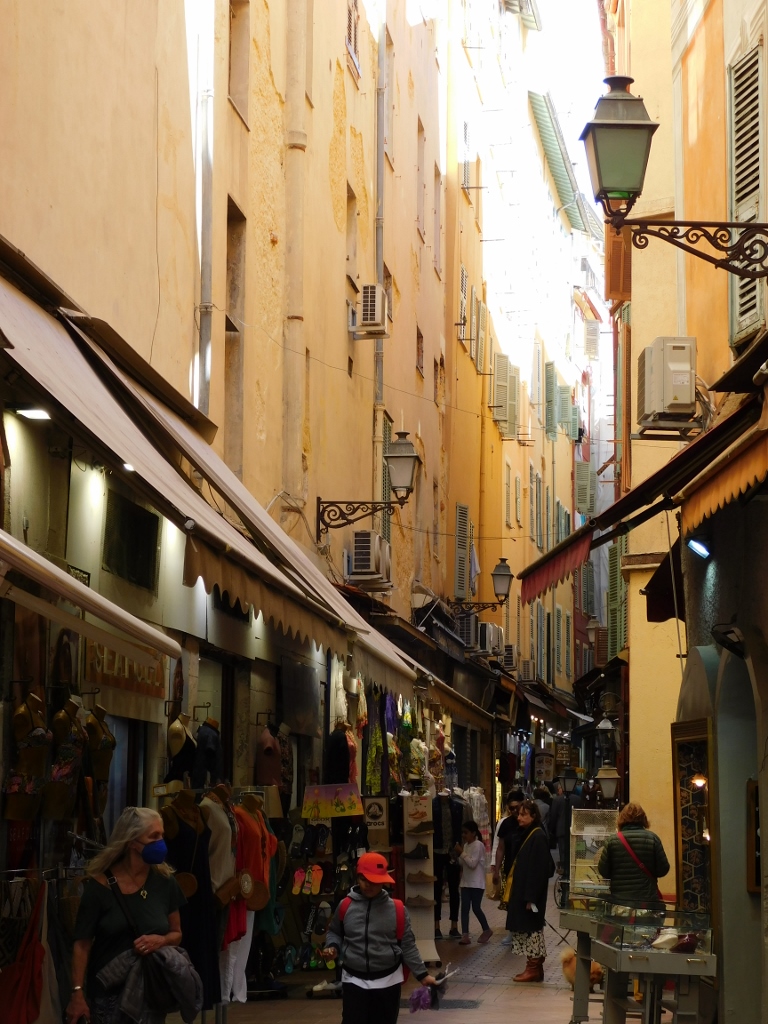 Touristy street in Old Nice
Touristy street in Old Nice
At Garibaldi Square I had just enough time to have a nice lunch with a, for me, mandatory glass of panaché.
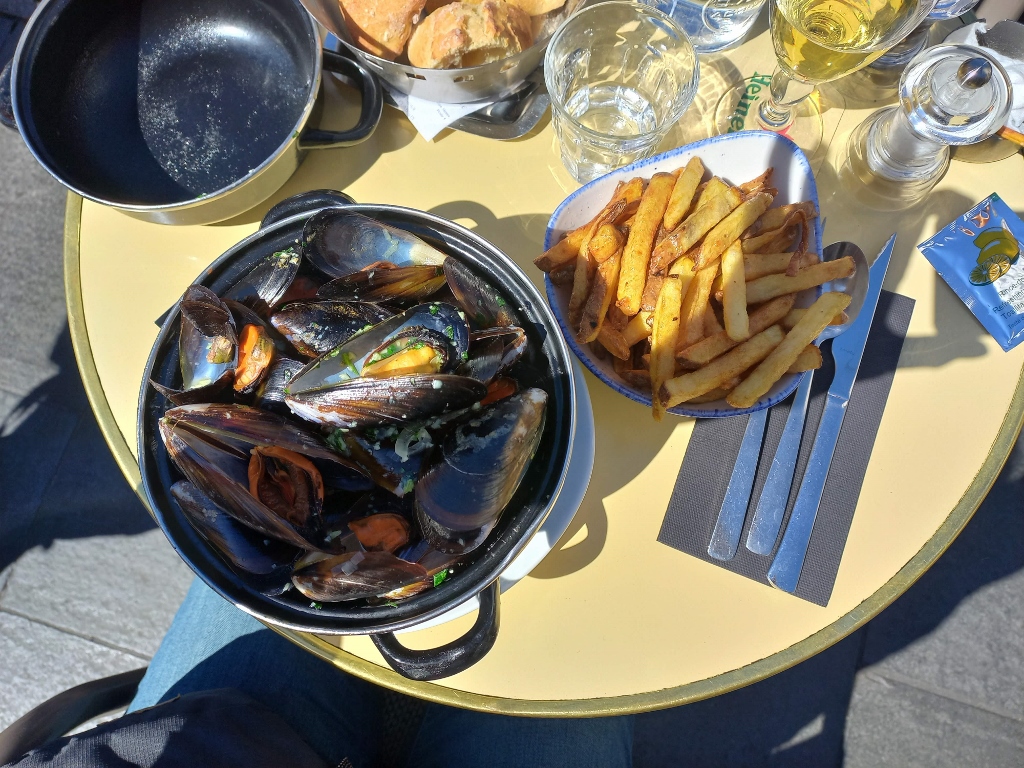 Farewell lunch in Nice
Farewell lunch in Nice
Since I’m mentioning panaché, here is the recipe for this light and refreshing drink.
PANACHÉ
- half a glass of 7UP
- half a glass of light beer
Pour 7UP into the glass first and then top it all up with beer.
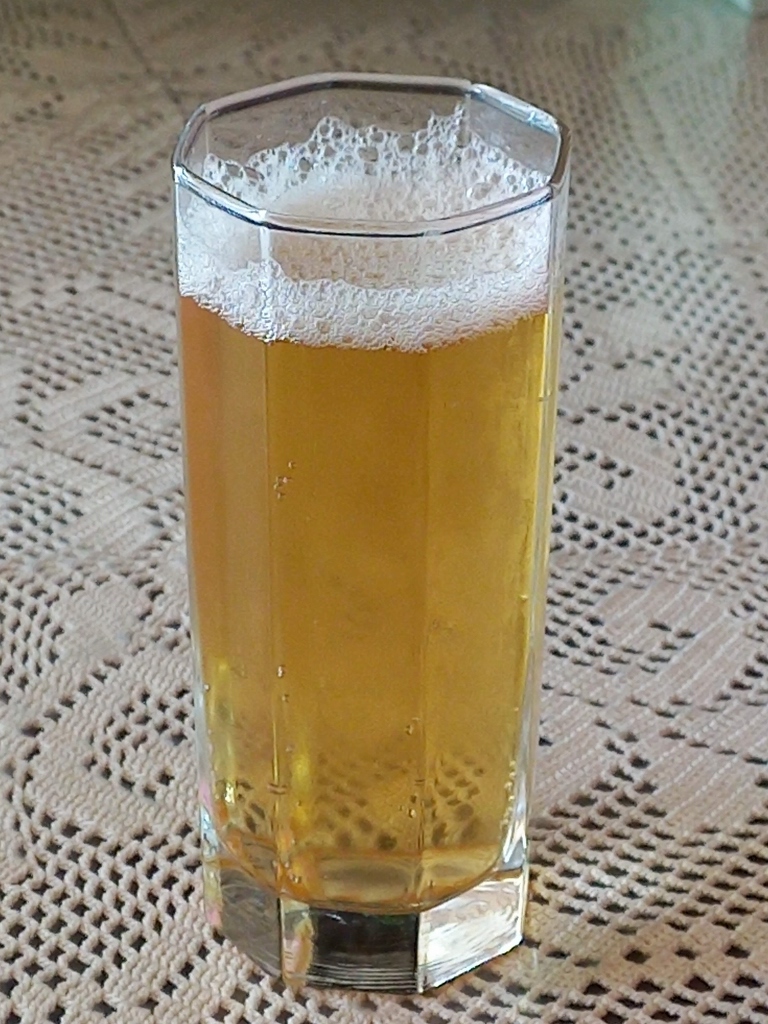 Home-made panaché
Home-made panaché
After this break I went to the train station where I had previously left my bag at the station’s left luggage office and then I transferred to the airport. Here is also the map that shows the places I visited during this trip:
This trip that I made to the French Riviera was neither planned nor kept in mind for long. Simply, at the beginning of the year I saw that there was a new airway line that connected Belgrade and Nice directly, and this actually inspired me. Already at the beginning of my travelogue I have mentioned that I passed along the French Riviera many years ago, but it was almost as if I had never been there for it was a very short and superficial visit. On the other hand, things almost never change here – the area is always beautiful, with pleasant climate, while the lavish palaces that catch the eye and that were originally built for the well-off clientele maybe only work on the maintenance of their facades. Admittedly, however, the models of expensive cars keep changing.
And yet, the French Riviera is not the place that is nowadays visited only by the wealthy. Of course, they do have places for themselves that are not accessible to all. But, to start with, if one likes to walk with occasional transfers by train from one place to the other, this is a very beautiful area and it is quite recommendable to start first from the famous wide promenade by the sea in Nice – the Promenade des Anglais. After that, the roads and the ways go in all directions...